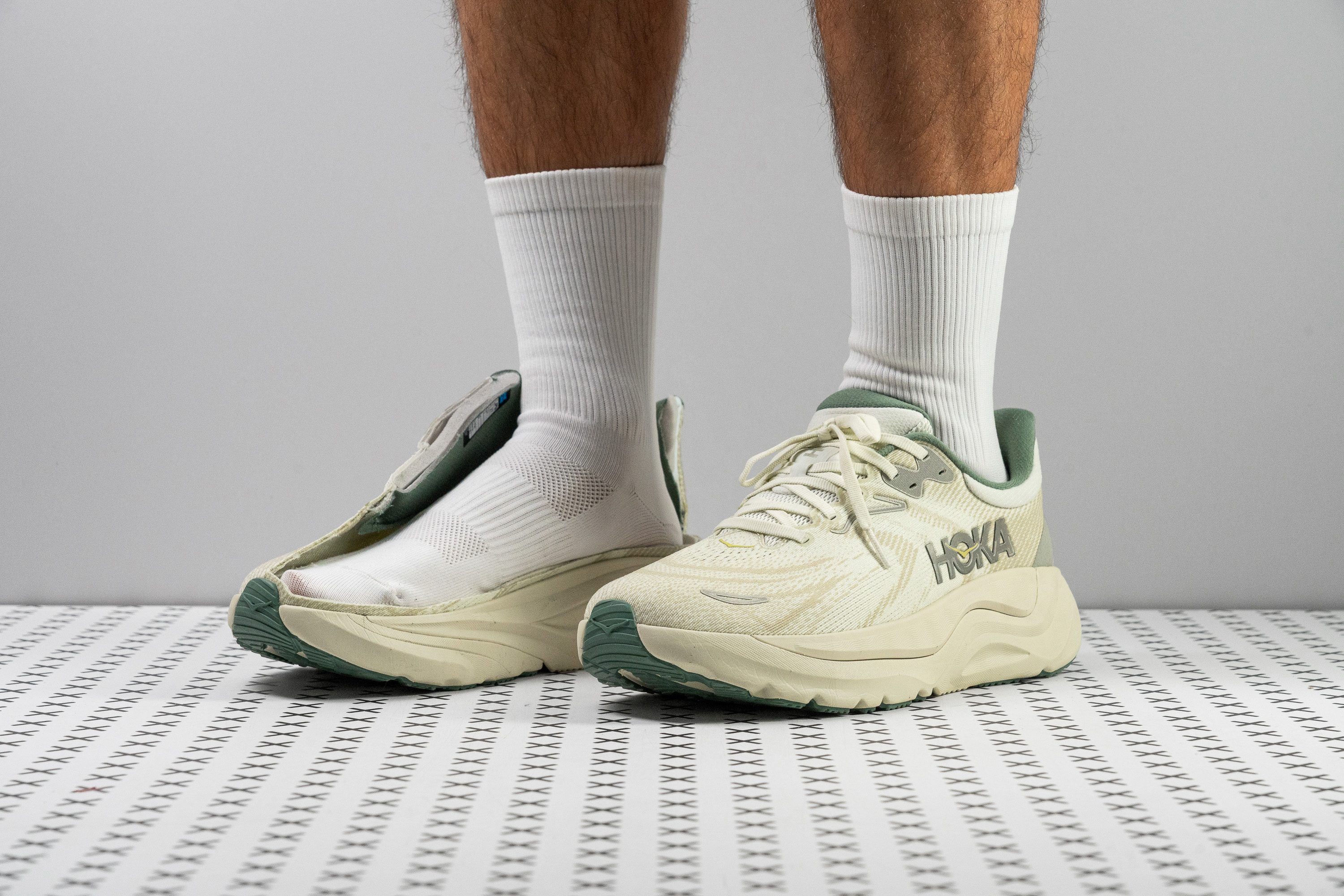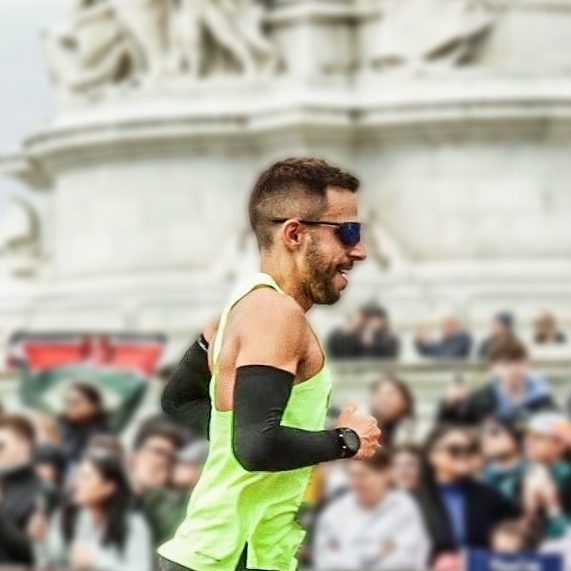Nuestra conclusión
Pros
- Ligeras para su tamaño
- Buena absorción de impactos
- Ajuste más ancho que el de las versiones anteriores
- Upper y suela muy duraderos
- Su rocker suaviza las transiciones
- Drop alto que se adapta mejor a los talonadores
- Cómodas y mullidas para el uso diario
- Sistema H-Frame para la estabilidad
- Contrafuerte del talón cómodo
Contras
- Muy poco transpirables
- El agarre necesita mejorar
- Todavía no tienen una espuma supercrítica
- Son un poquito más caras
Veredicto de los usuarios
- Top 7% más vendidas zapatillas de running
Comparativa
Las zapatillas de running más parecidas
+ + Añadir unas zapatillas | |||||
|---|---|---|---|---|---|
| Puntuación global | 85 Buenas | 80 Buenas | N/A | 82 Buenas | |
| Precio | 160 € | 130 € | 190 € | 160 € | |
| Pace | Correr a diario | Correr a diario | Correr a diario | Correr a diario | |
| Absorción de impactos | Alta | Moderada | Moderada | Alta | |
| Retorno de energía | Bajo | Bajo | Alto | Moderado | |
| Tracción | Moderada | Alta | Alta | Alta | |
| Arch support | Estabilidad | Estabilidad | Estabilidad | Estabilidad | |
| Peso laboratorio Peso marca | 9.1 oz / 259g 9 oz / 256g | 9.6 oz / 272g 9.3 oz / 265g | 9.3 oz / 264g 9.5 oz / 269g | 9.5 oz / 269g 9.4 oz / 266g | |
| Drop laboratorio Drop marca | 11.3 mm 8.0 mm | 9.6 mm 8.0 mm | 10.1 mm 8.0 mm | 8.7 mm 8.0 mm | |
| Técnica de carrera | Talón | TalónMedio/antepié | - | TalónMedio/antepié | |
| Talla | Tallan bien | Tallan un poquito pequeño | - | Tallan bien | |
| Rigidez de la mediasuela | Blanda | Blanda | Blanda | Blanda | |
| Diferencia de la rigidez de la mediasuela en frío | Normal | Normal | Pequeña | Normal | |
| Durabilidad de la parte delantera | Buena | Decente | Decente | Decente | |
| Durabilidad del acolchado del talón | Alta | Alta | Media | Alta | |
| Durabilidad de la suela exterior | Buena | Buena | Buena | Buena | |
| Transpirabilidad | Baja | Baja | Baja | Baja | |
| Anchura / ajuste | Media | Media | Estrecha | Media | |
| Anchura de la parte delantera | Media | Media | Estrecha | Estrecha | |
| Flexibilidad | Rígida | Moderada | Moderada | Moderada | |
| Rigidez torsional | Rígidas | Rígidas | Rígidas | Rígidas | |
| Rigidez del contrafuerte del talón | Moderado | Moderado | Rígido | Rígido | |
| Rocker | ✓ | ✗ | ✗ | ✗ | |
| Talón laboratorio Talón marca | 39.4 mm 39.0 mm | 35.4 mm 34.5 mm | 36.8 mm 33.0 mm | 36.9 mm 36.5 mm | |
| Antepié laboratorio Antepié marca | 28.1 mm 31.0 mm | 25.8 mm 26.5 mm | 26.7 mm 25.0 mm | 28.2 mm 28.5 mm | |
| Anchuras disponibles | EstándarAnchoExtra Ancho | EstándarAnchoExtra Ancho | Estándar | EstándarAnchoExtra Ancho | |
| Orthotic friendly | ✓ | ✓ | ✗ | ✓ | |
| Estación | Todas las estaciones | Todas las estaciones | - | Todas las estaciones | |
| Removable insole | ✓ | ✓ | ✗ | ✓ | |
| Clasificación | #222 40% inferior | #306 17% inferior | #198 46% inferior | #278 25% inferior | |
| Popularidad | #26 Top 8% | #153 Top 42% | #138 Top 38% | #66 Top 18% |
Quién debería comprárselas
En nuestra opinión, las HOKA Arahi 8 son una opción estupenda para:
- Los runners que creen que las Arahi 7 son demasiado firmes o que les falta amortiguación, ya que este modelo mejora ambos problemas.
- Cualquiera que esté buscando unas zapatillas de estabilidad suave que se sienta ligera bajo los pies.
- Los talonadores que tuvieron que esquivar el drop bajo de las versiones anteriores.
- Los que solo quieren unas zapatillas cómodas (y estables) para su día a día, y salir a correr de vez en cuando.
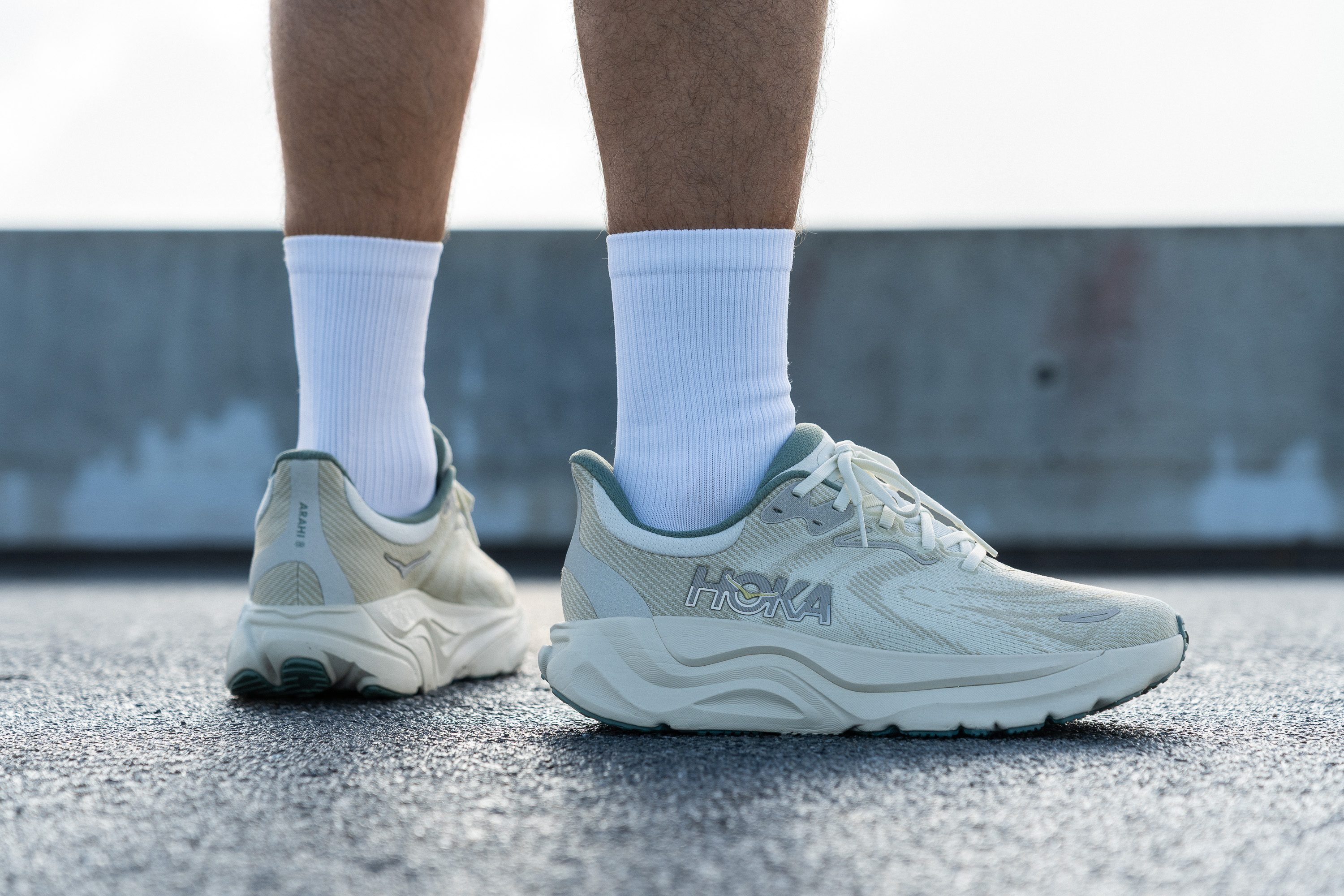
Quién NO debería comprárselas
Creemos que las HOKA Arahi 8 no son la mejor opción para los corredores que entrenan en climas cálidos. En nuestro laboratorio, nos quedó clarísimo que no son transpirables, y comprártelas en un color clarito... no lo va a solucionar. Si estás buscando un modelo transpirable que ofrezca cierta estabilidad, te recomendamos las ASICS GT 2000 13 o las Brooks Adrenaline GTS 23.
También creemos que la suela de las Arahi 8 se queda corta en cuanto agarre. La verdad es que, siguiendo los resultados de nuestro laboratorio, su tracción sobre superficies mojadas nos decepcionó. Si el agarre es una de tus prioridades, las PUMA ForeverRun Nitro 2 son una opción mucho mejor, ya que ofrecen una tracción mucho más confiable haga el tiempo que haga.
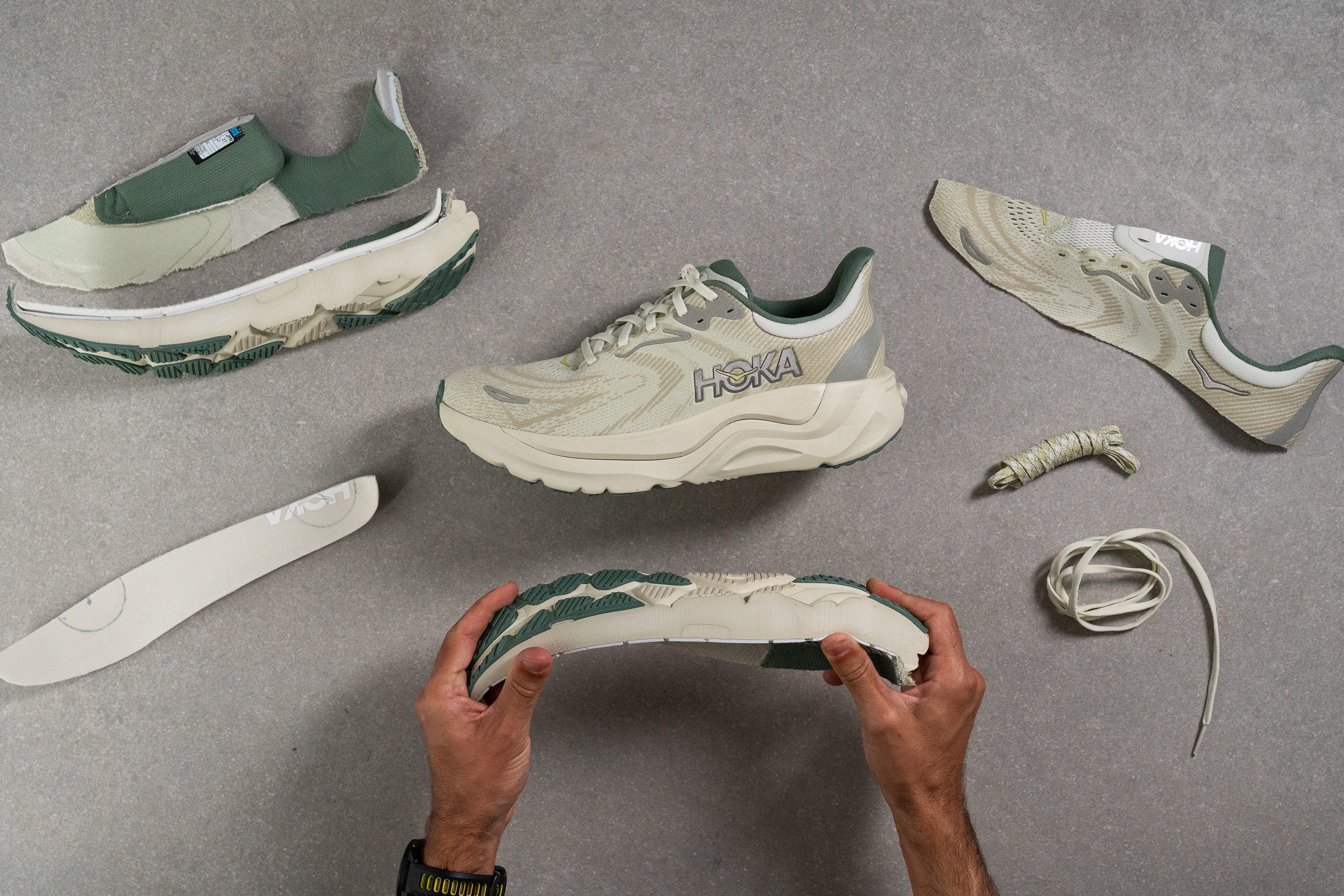
Amortiguación
Shock absorption
Algo que nos decepcionó de las HOKA Arahi 7 fue su baja absorción de impactos en el talón, sobre todo porque estamos viviendo en una época en la que la mayoría de los corredores se esperan niveles más altos de amortiguación.
Pero las Arahi 8 lo solucionan, con un resultado de 138 SA en el talón (en comparación con los 106 SA de la versión anterior) que las hace mucho más adecuadas para las distancias largas. Además, los corredores de metatarsos estarán bien protegidos, ya que este modelo obtuvo una puntuación de 113 SA en el antepié.
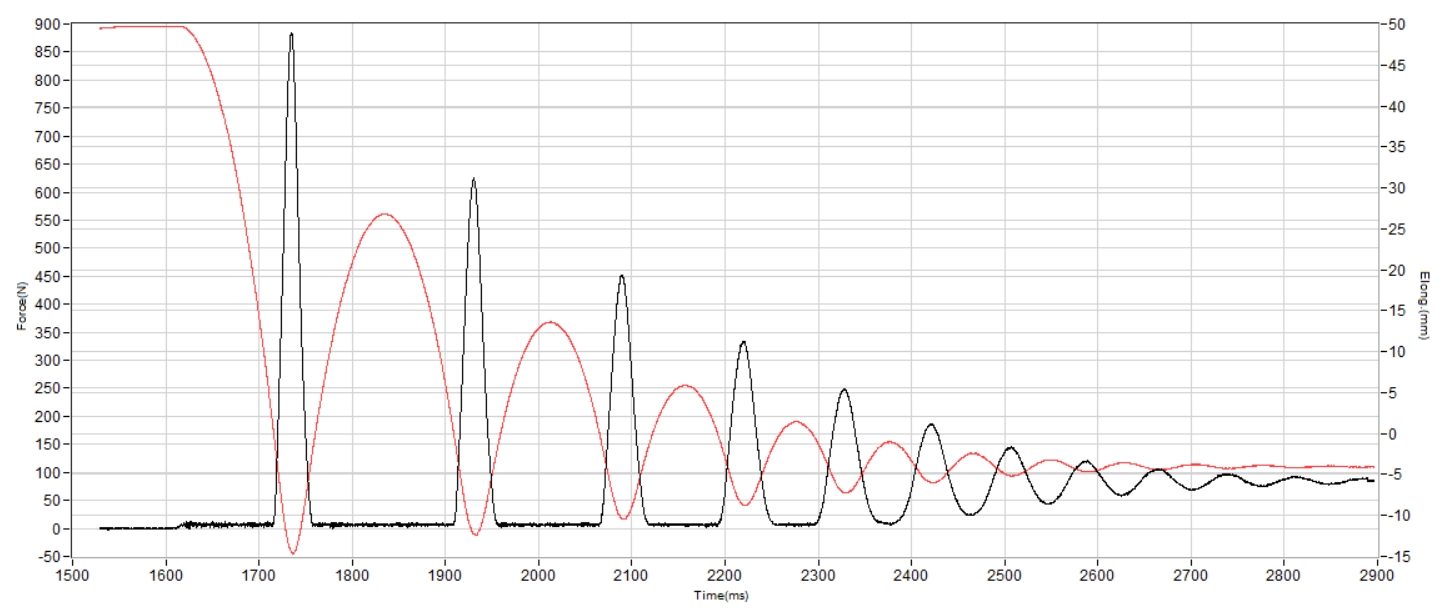
| Arahi 8 | 138 SA |
| Media | 129 SA |
Energy return
Cada vez que HOKA lanza unas zapatillas, nos preguntamos si va a utilizar la espuma EVA supercrítica y con rebote de la serie Mach o si se va a decantar por la CMEVA, que es una espuma más vieja que no tiene nada de rebote. Las Arahi 8 tienen esta última, así que su retorno de energía es bastante modesto: un 54,4 % en el talón y un 60,9 % en el antepié.
| Arahi 8 | 54.4% |
| Media | 58.5% |
Altura de la suela en la zona del talón
En algunas de nuestras últimas reviews, decíamos que muchas marcas estaban aumentando la altura de la suela de sus zapatillas de entrenamiento diario, muchas veces superando los 40 mm, y HOKA es un claro ejemplo. Las Clifton 10 ya han pasado ese límite y las Arahi 8 se acercan con sus 39,4 mm.
Esto significa que la absorción de impactos es mayor y que la pisada ofrece más protección, pero una menor conexión con el suelo. Eso sí, ten en cuenta que la estabilidad se puede ver afectada si no se hacen ajustes de diseño para compensar esta altura.
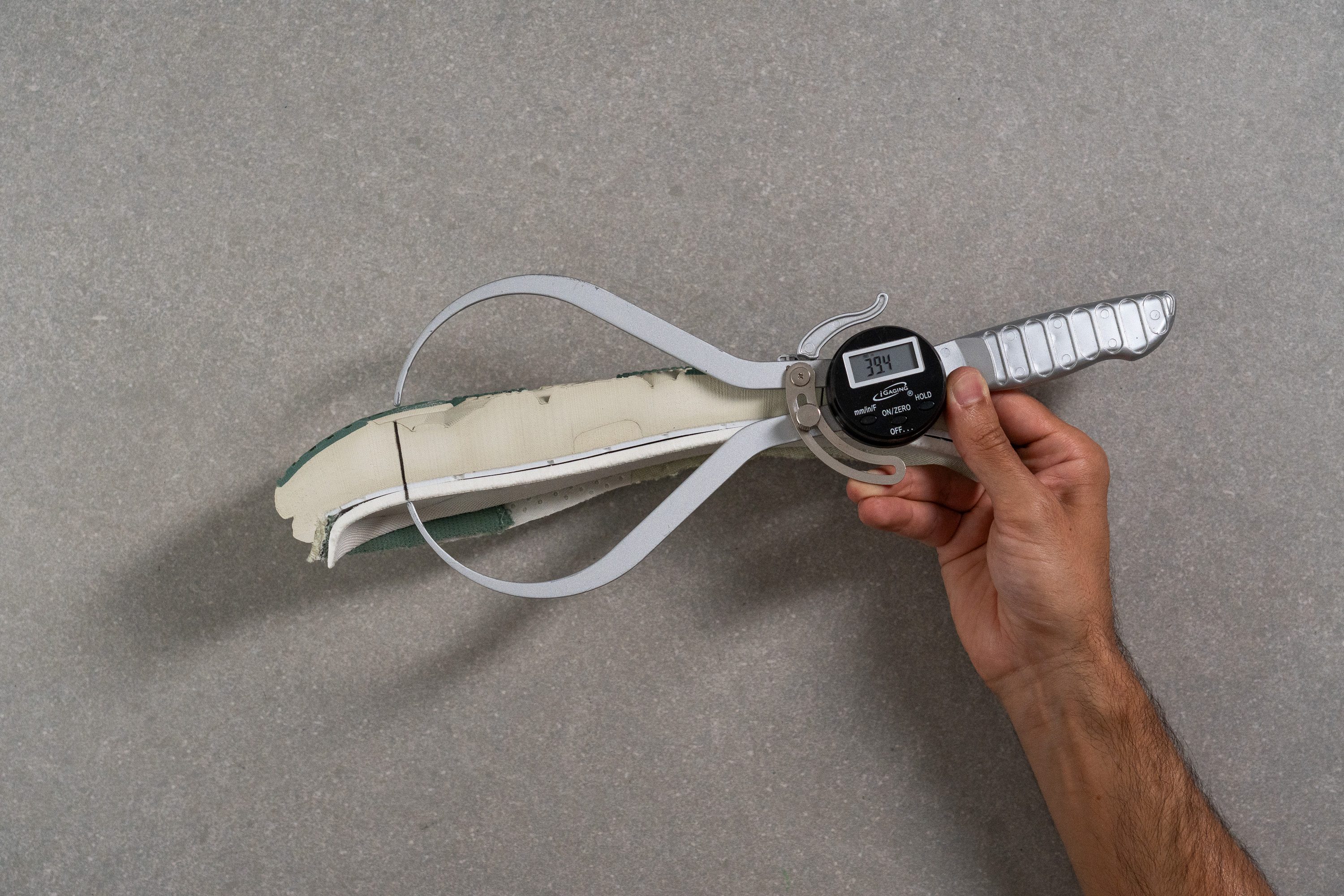
| Arahi 8 | 39.4 mm |
| Media | 34.8 mm |
Altura de la suela en el antepié
La altura del antepié es prácticamente la misma que la de sus predecesoras; cosa que nos tiene todo el sentido cuando nos fijamos en el nuevo drop. Sea como fuere, 28,1 mm es un resultado estupendo y cómodo que funciona bien para estas zapatillas.
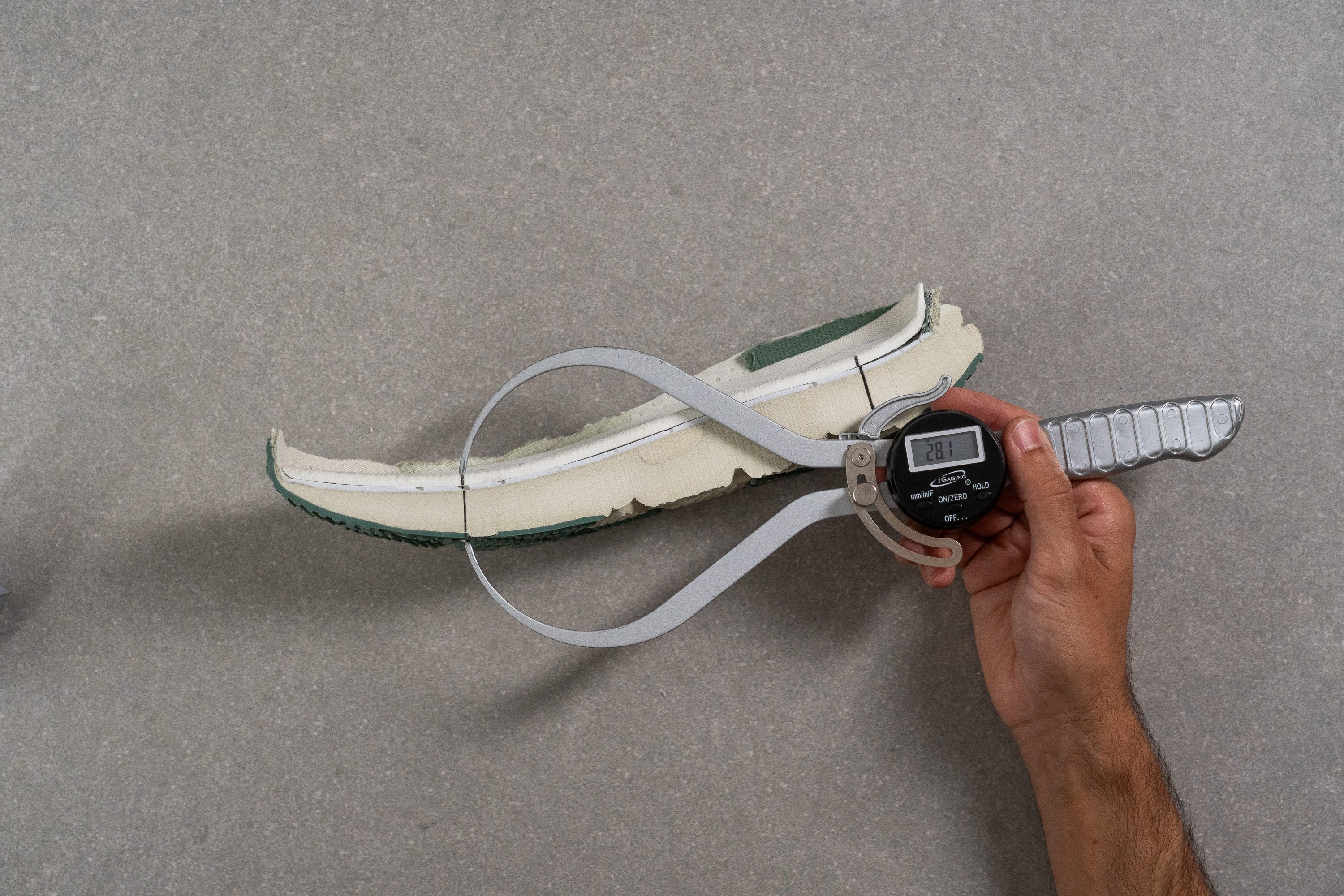
| Arahi 8 | 28.1 mm |
| Media | 26.2 mm |
Drop
HOKA solía estar muy orgullosa del drop constante de 5 mm en toda su línea, pero eso ha cambiado con el aumento en las alturas de la suela.
Las Arahi 8, al igual que otros modelos recientes de HOKA, tienen un drop de 8 mm según la página oficial. Sin embargo, a nosotros nos dio un resultado mucho más alto: 11,3 mm, y cuando cortamos estas zapatillas por la mitad, su perfil nos dejó claro que tienen un drop alto. Gracias a nuestras pruebas de uso, podemos decirte que se sienten más como un modelo de Nike que como unas Ahari al correr, y funcionan mucho mejor si eres talonador.
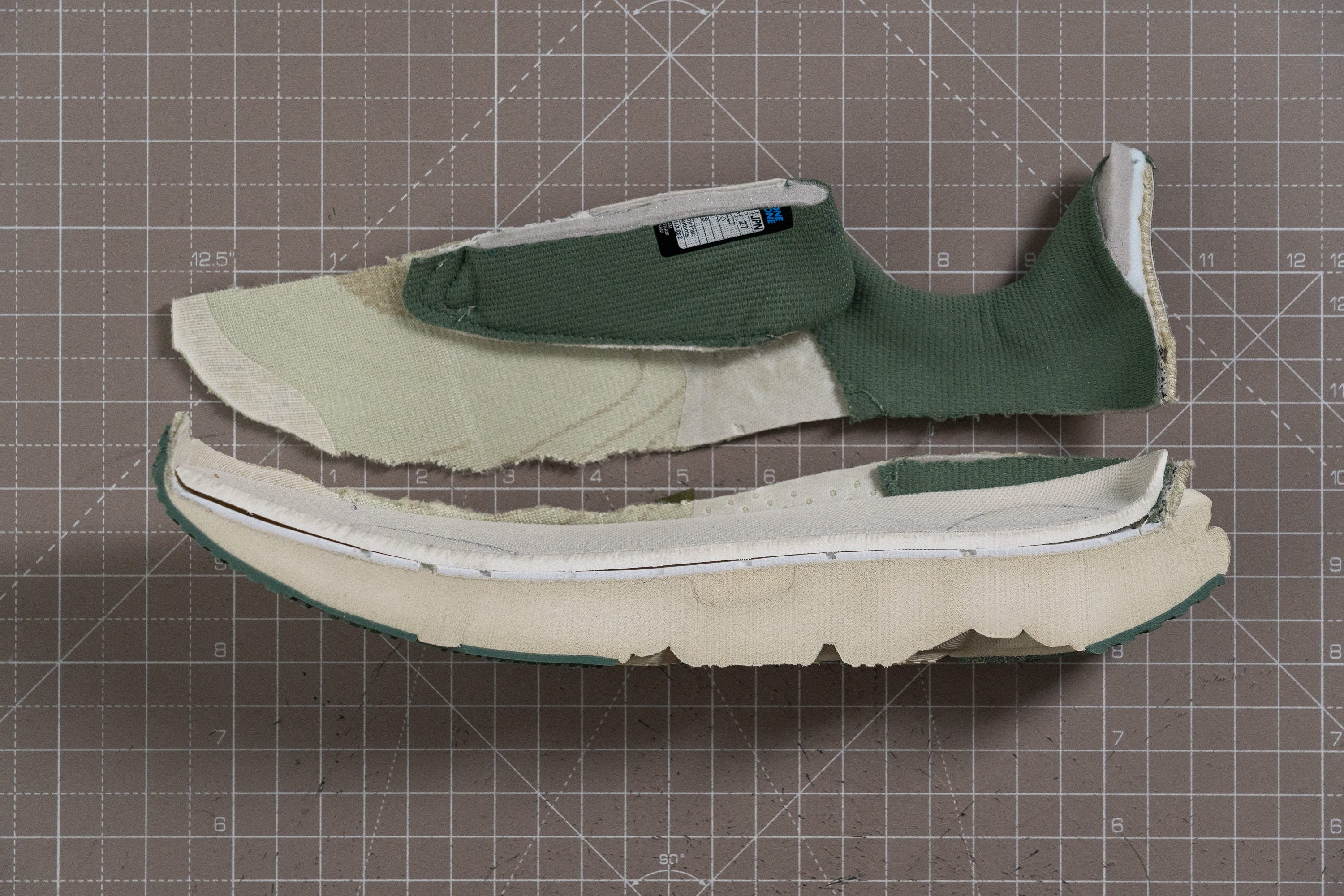
| Arahi 8 | 11.3 mm |
| Media | 8.6 mm |
Suavidad de la mediasuela
Pero es que todavía hay otro cambio importante en las Arahi 8 que muchos fan le llevaban pidiendo a HOKA... demasiado tiempo. Las Arahi 7 tienen una espuma muy firme (26,6 HA), pero la marca ha utilizado una EVA más blandita para esta nueva versión (16,4 HA), lo que hace que sea más cómoda bajo los pies.
Igual que con el aumento de la altura de la suela, esto supone un cambio importante para la estabilidad, ya que una plataforma de aterrizaje más blanda también es más inestable. Pero bueno, la pisada sigue siendo estable, y en la sección de estabilidad te explicaremos cómo HOKA gestionó tan bien estos cambios.
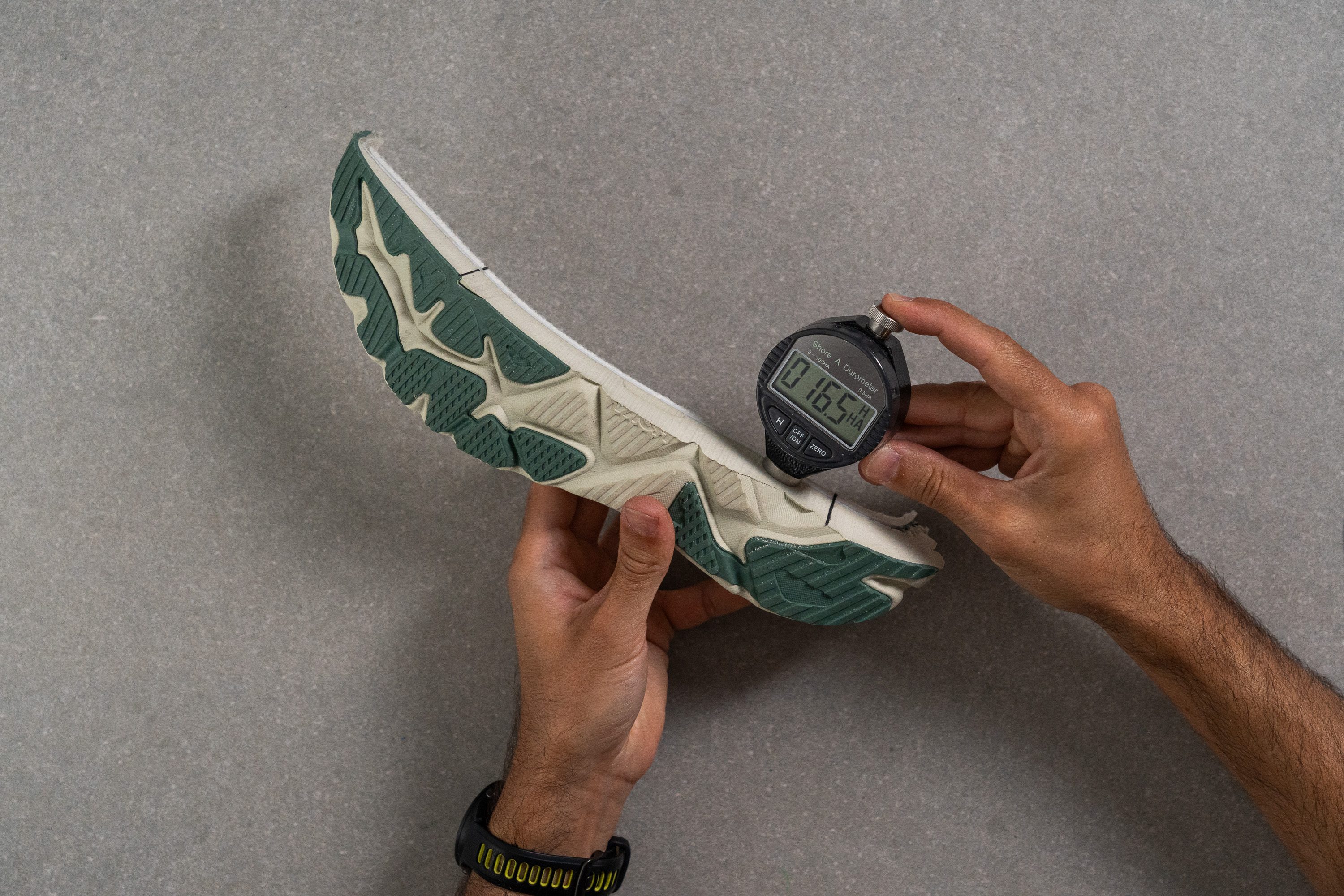
| Arahi 8 | 16.4 HA |
| Media | 20.4 HA |
Suavidad de la espuma secundaria
Descubrimos que estas zapatillas también tienen una espuma secundaria que es más firme, de 24,0 HA. Es el ingrediente principal del sistema de estabilidad H-Frame, así que solo se utiliza un poco.
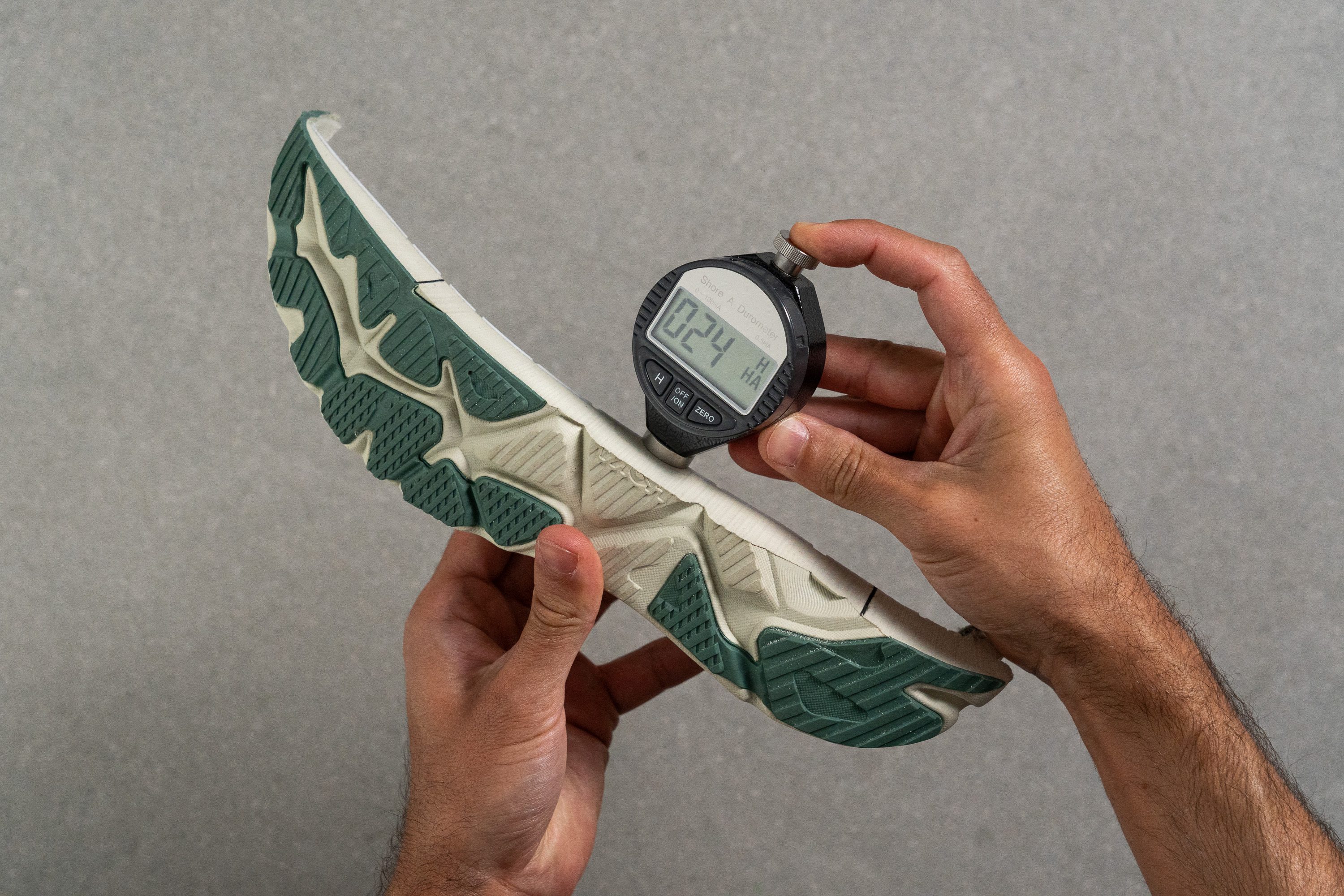
| Arahi 8 | 24.0 HA |
| Media | 22.7 HA |
Rocker
Las HOKA Arahi 8 utilizan lo que HOKA llama el Early-Stage Meta-Rocker, que básicamente es que el antepié se empieza a curvar hacia arriba desde la zona del mediopié, y el biselado del talón se encarga de guiar las transiciones. Este rocker es más pronunciado que el de la versión 7, sobre todo en la zona del talón.
Si a esto se le suma lo alta que es la suela, ambos detalles minimizan las fuerzas de impacto y les ofrecen a los talonadores unas mejores transiciones.
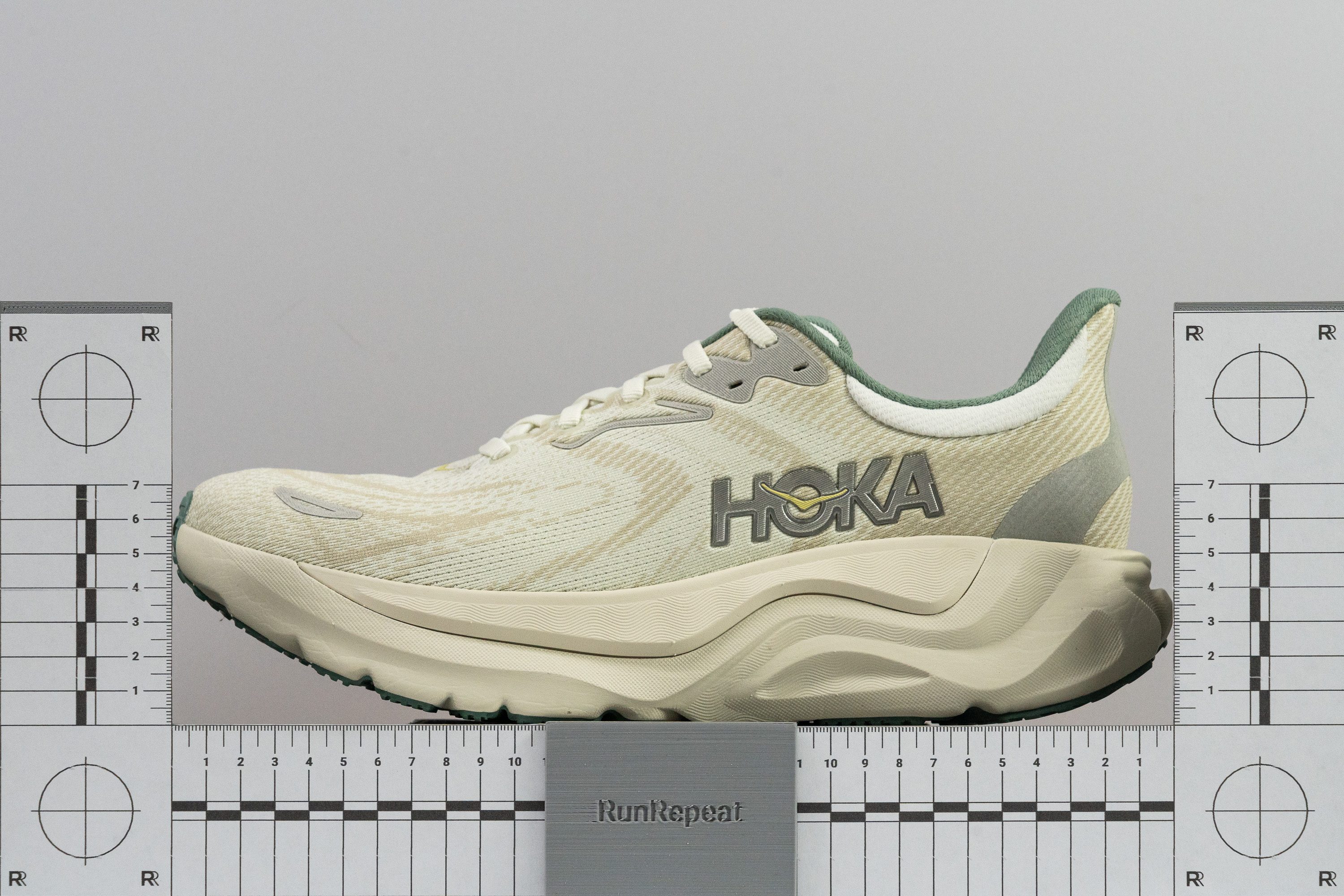
Tallaje y ajuste
Talla
Las HOKA Arahi 8 tallan bien (16 votos).
Anchura / Ajuste
A veces, las marcas solo actualizan un par de cositas para poder justificar que le han cambiado el nombre a la versión de unas zapatillas, pero no es el caso de las Arahi 8. Este modelo parece totalmente nuevo, y eso se lo debe, en gran parte, al ajuste.
Hicimos un molde de gel en el laboratorio para poder medir bien los 3 puntos clave y ofrecer resultados claros. En el primero, nuestro calibre marcó 95,3 mm de cancho, que está dentro de la media y nos dice que el ajuste es más bien natural, evitando el típico diseño estrecho de la mayoría de las HOKA.
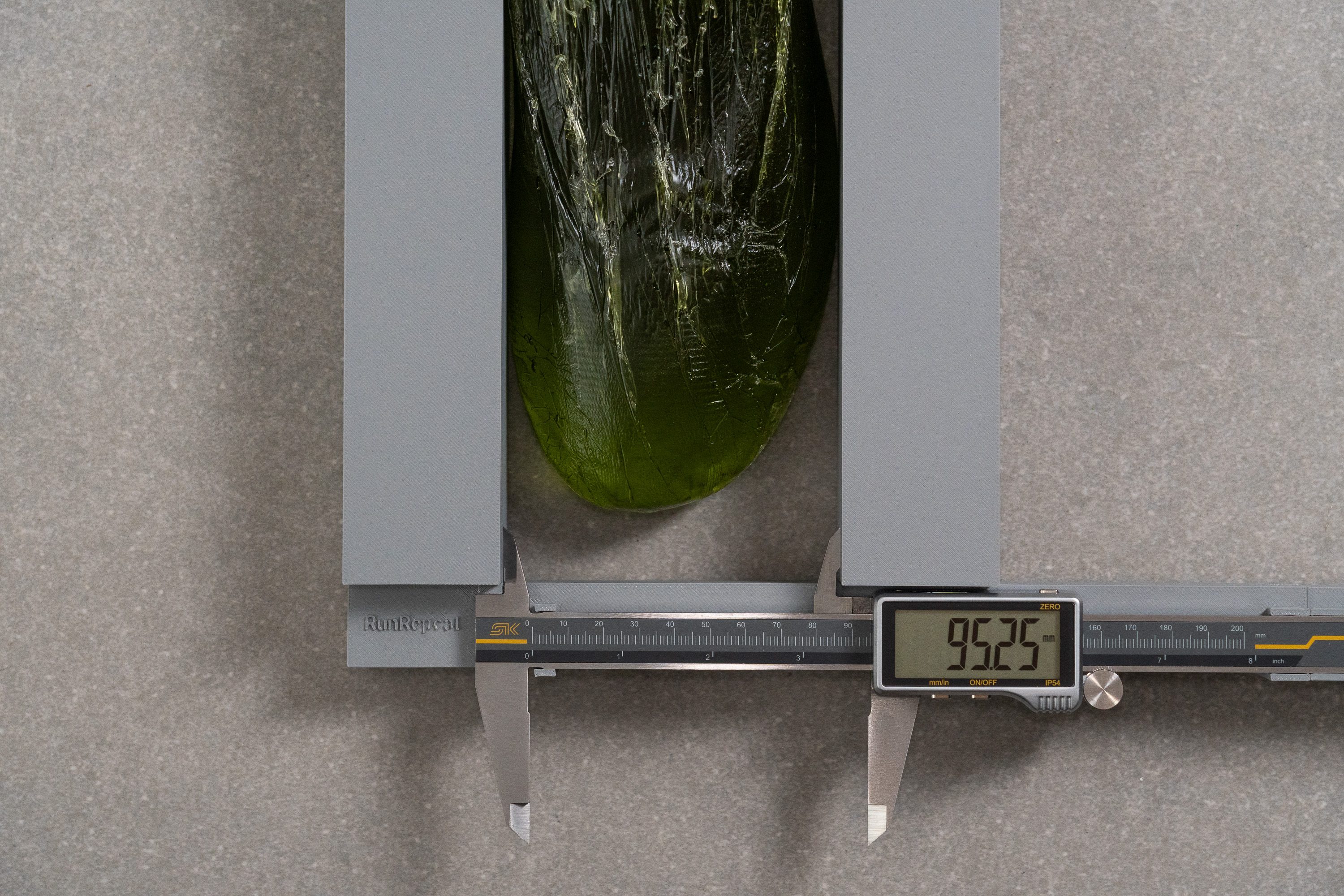
| Arahi 8 | 95.3 mm |
| Media | 95.1 mm |
Anchura de la parte delantera
La evidencia más contundente de que el ajuste de estas zapatillas es más ancho está en la parte delantera. Nuestro calibre marcó 73,6 mm, cuando las Arahi 7 solo llegaban a los 70,0 mm en esta misma prueba.
Pero lo mejor de todo es que, en algunos páises, estas zapatillas están disponibles en distintas anchuras.
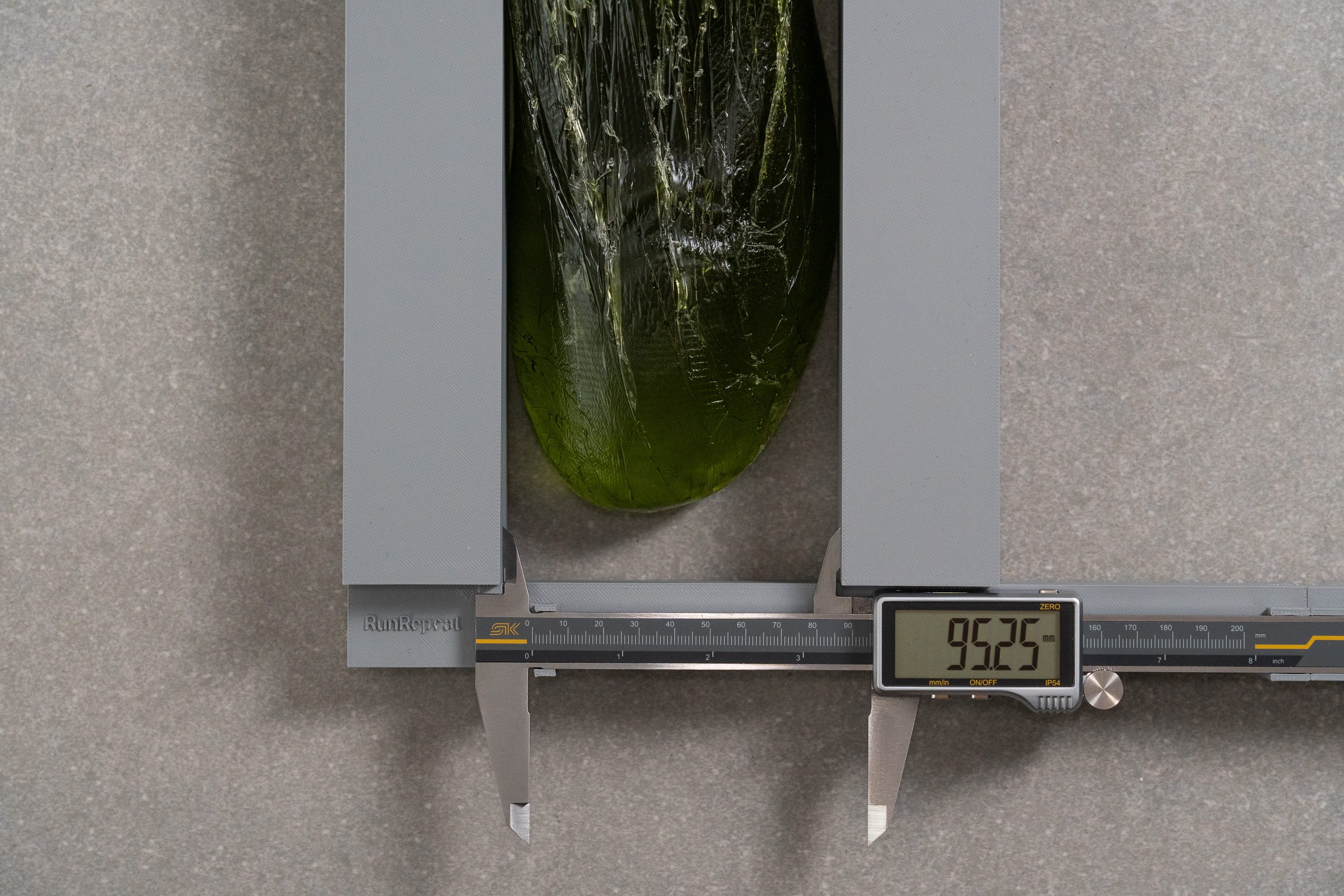
| Arahi 8 | 73.6 mm |
| Media | 73.3 mm |
Altura de la parte delantera
Cuando nos pusimos las Arahi 8, no sentimos ninguna presión en los dedos de los pies.
Después, ya en nuestro laboratorio, medimos su espacio vertical y nos dio 27,6 mm. Este resultado coincide con el de la mayoría de las zapatillas de entrenamiento diario, así que se adapta cómodamente a muchas formas del pie.
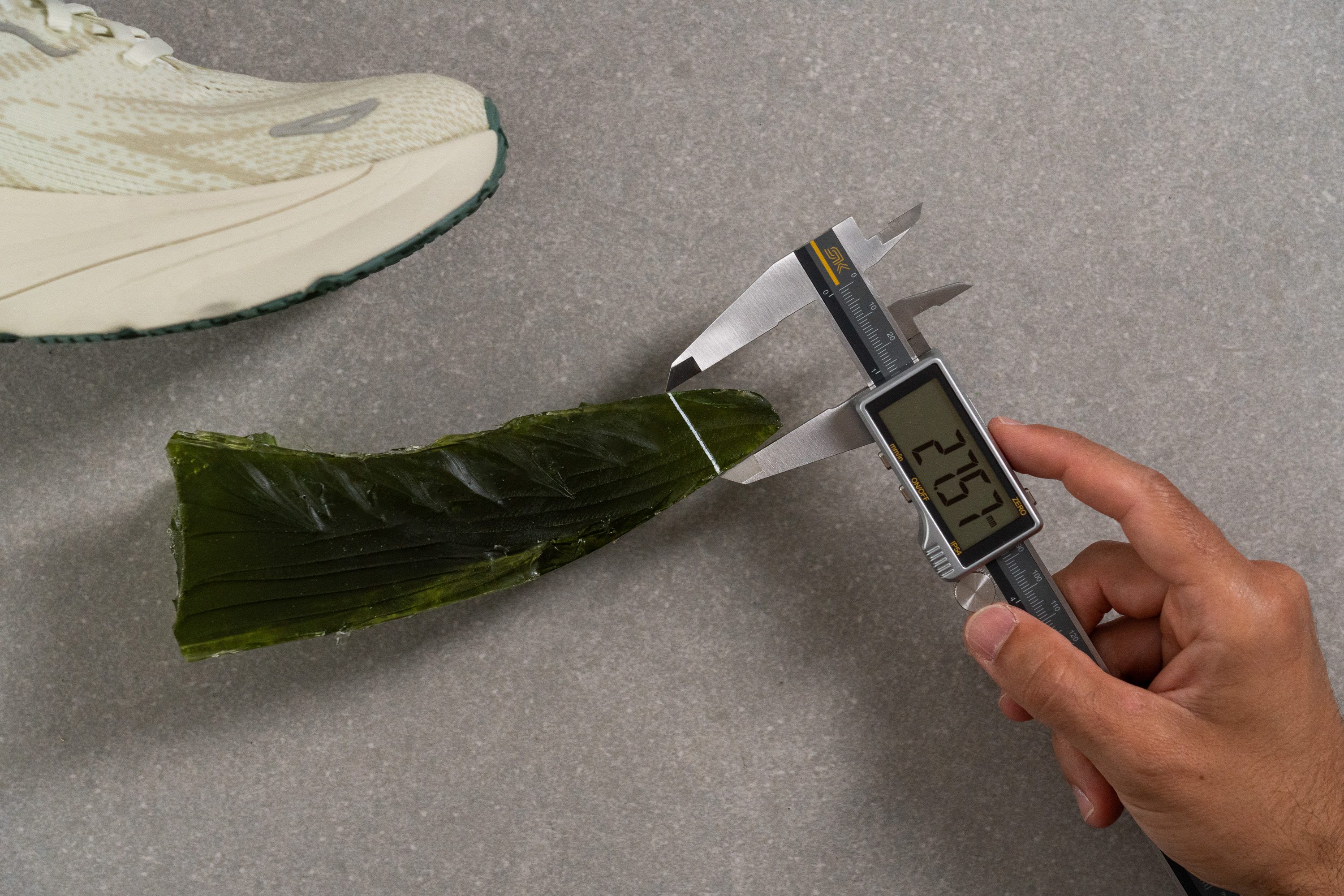
| Arahi 8 | 27.6 mm |
| Media | 27.1 mm |
Tracción / Agarre
Traction test
Las zapatillas para correr por asfalto de HOKA nunca han destacado en agarre, y las Arahi 8 lo confirman. Las analizamos utilizando el estándar SATRA TM144, y vimos que se llevaban un resultado de solo 0,36, que es incluso más bajo que el 0,40 de las Arahi 7.
Aunque su rendimiento en suelos secos es razonable, en las superficies mojadas o resbaladizas nos supo a poco.
| Arahi 8 | 0.36 |
| Media | 0.48 |
Diseño de la suela exterior
La suela de las Arahi 8 tiene zonas de caucho duradero combinadas con espuma EVA expuesta, siguiendo un diseño clásico de los modelos de entrenamiento diario de HOKA. Además, tienen superposiciones gruesas de caucho en los puntos en los que los pronadores aplican más presión, y podemos la espuma de color crema tanto en el mediopié como a través de los recortes.
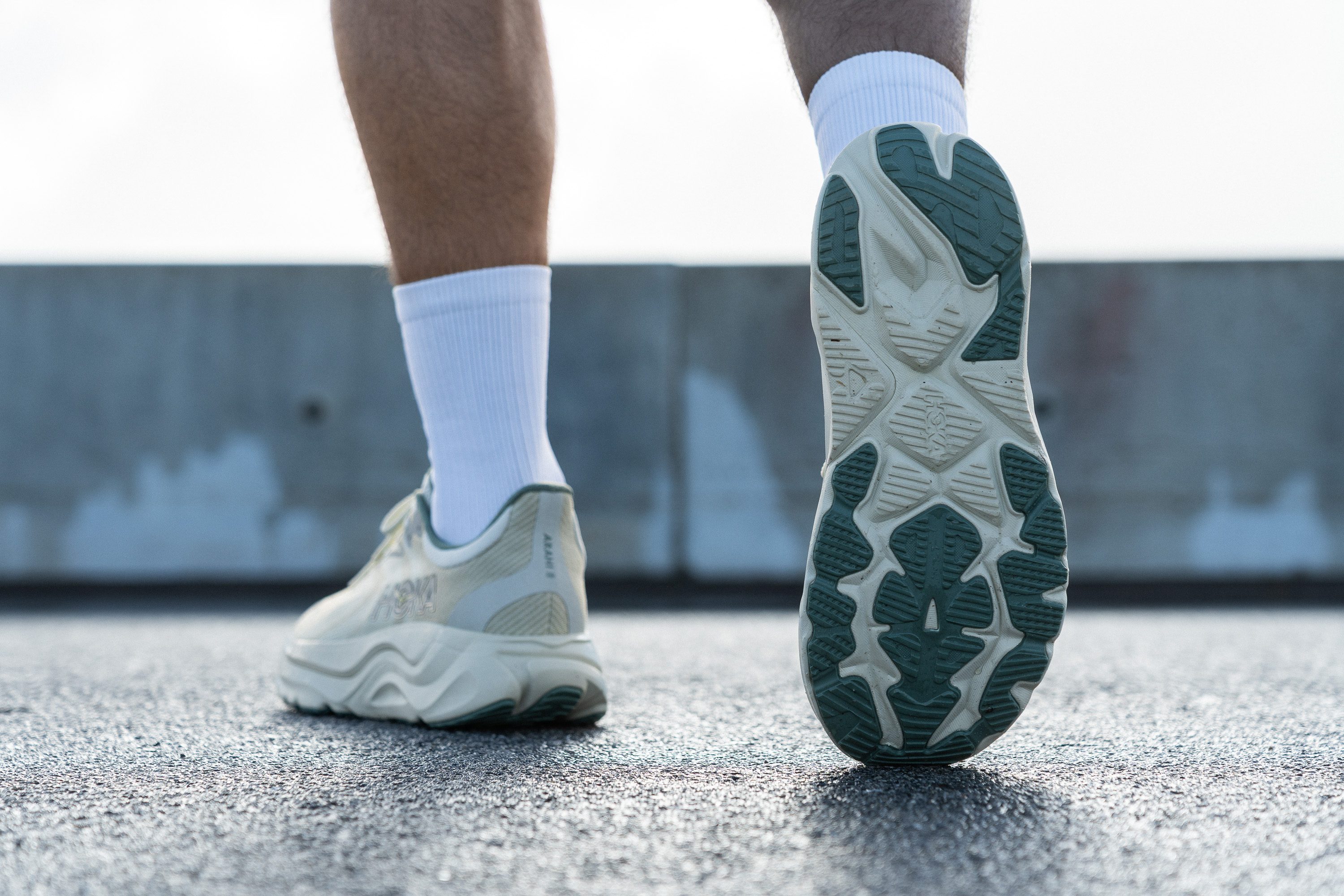
Flexibilidad / Rigidez
Las HOKA Arahi 8 no son unas zapatillas flexibles, pero la verdad es que es algo que nos esperábamos de un modelo con una amortiguación alta que está diseñado pensando en la estabilidad. En nuestra prueba de flexión de 30 grados, obtuvieron un resultado de 18,3 N. Así que, aunque siguen dentro de un rango razonable, sin duda son más bien rígidas.
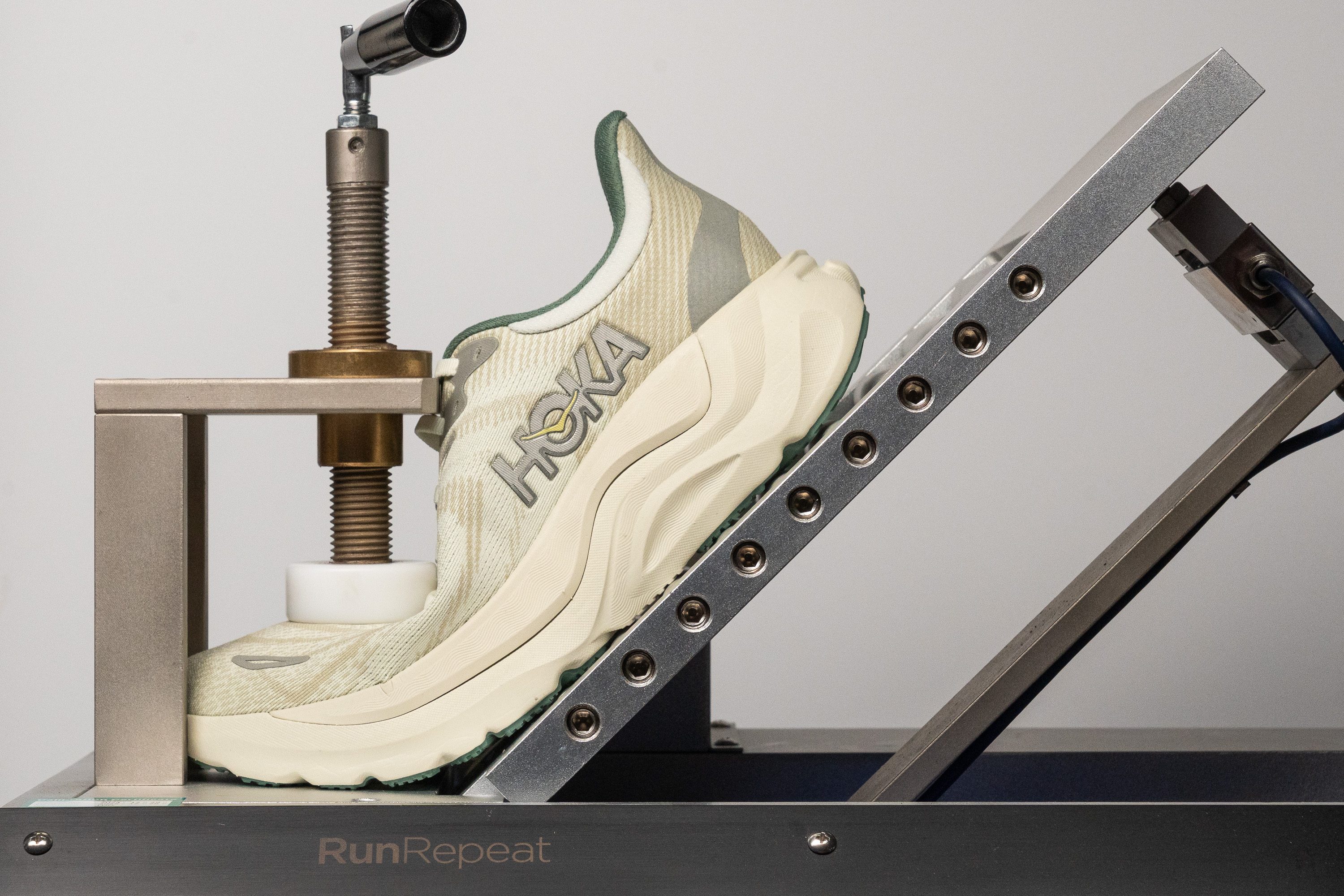
| Arahi 8 | 18.3N |
| Media | 15.3N |
Peso
Aunque algunos cambios en las Arahi 8 pueden ser objeto de debate entre los fans de la serie, hay un detalle sobre el que no hay ninguna queja: el peso.
Aunque ahora su amortiguación es mucho mayor, las Arahi 8 pesan un poco menos que la versión 7. Cuando las subimos a la báscula en el laboratorio, marcó 259 g, cuando las Arahi 7 pesan 266 g. A ver, es un cambio pequeño, sí, pero la verdad es que nos ha dejado boquiabiertos: al final esta nueva versión no solo tiene más espuma, sino que también se centra en la estabilidad.
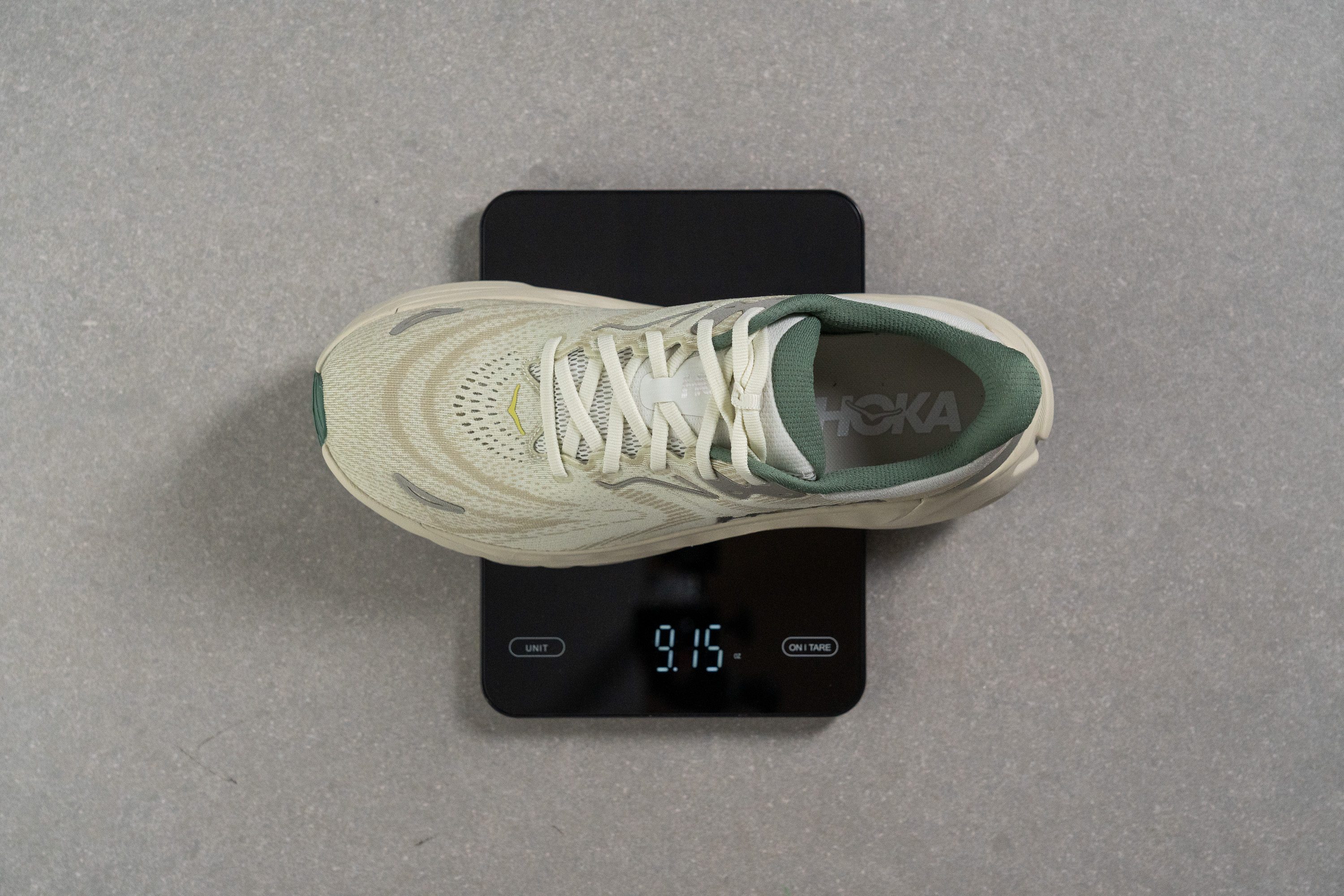
| Arahi 8 | 9.1 oz (259g) |
| Media | 9.3 oz (264g) |
Transpirabilidad
Descubrimos que las Arahi 8 tienen un upper de malla jacquard de doble capa. Sinceramente... no sentimos que fuese muy transpirable, y nuestras pruebas de laboratorio nos dieron la razón.
El upper de estas HOKA se llevó solo un 2/5 en nuestra prueba de humo, así que no dejan que tus pies respiren bien del todo cuando hace calor.
Nuestra potente luz LED nos volvió a dar la razón, ya que no pudo brillar ni un poquito. Esto sugiere que HOKA se centró, intencionadamente, en que este modelo fuese duradero y estable.
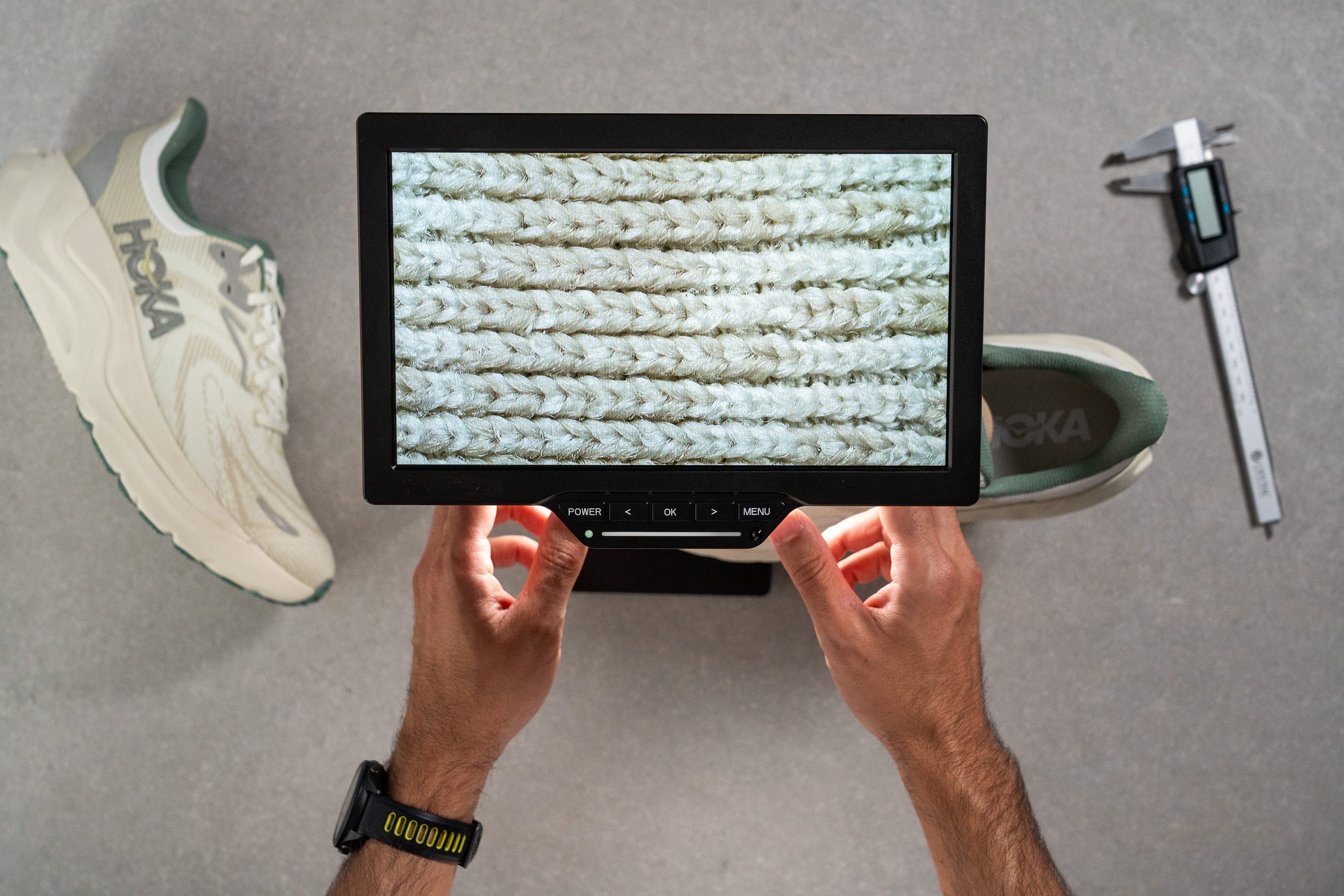
Gracias a nuestro microscopio digital, nos quedó clarísimo que el aire no tienen forma de salir de las zapatillas prácticamente. Mira lo denso que es el tejido..., ¡y sin agujeritos!
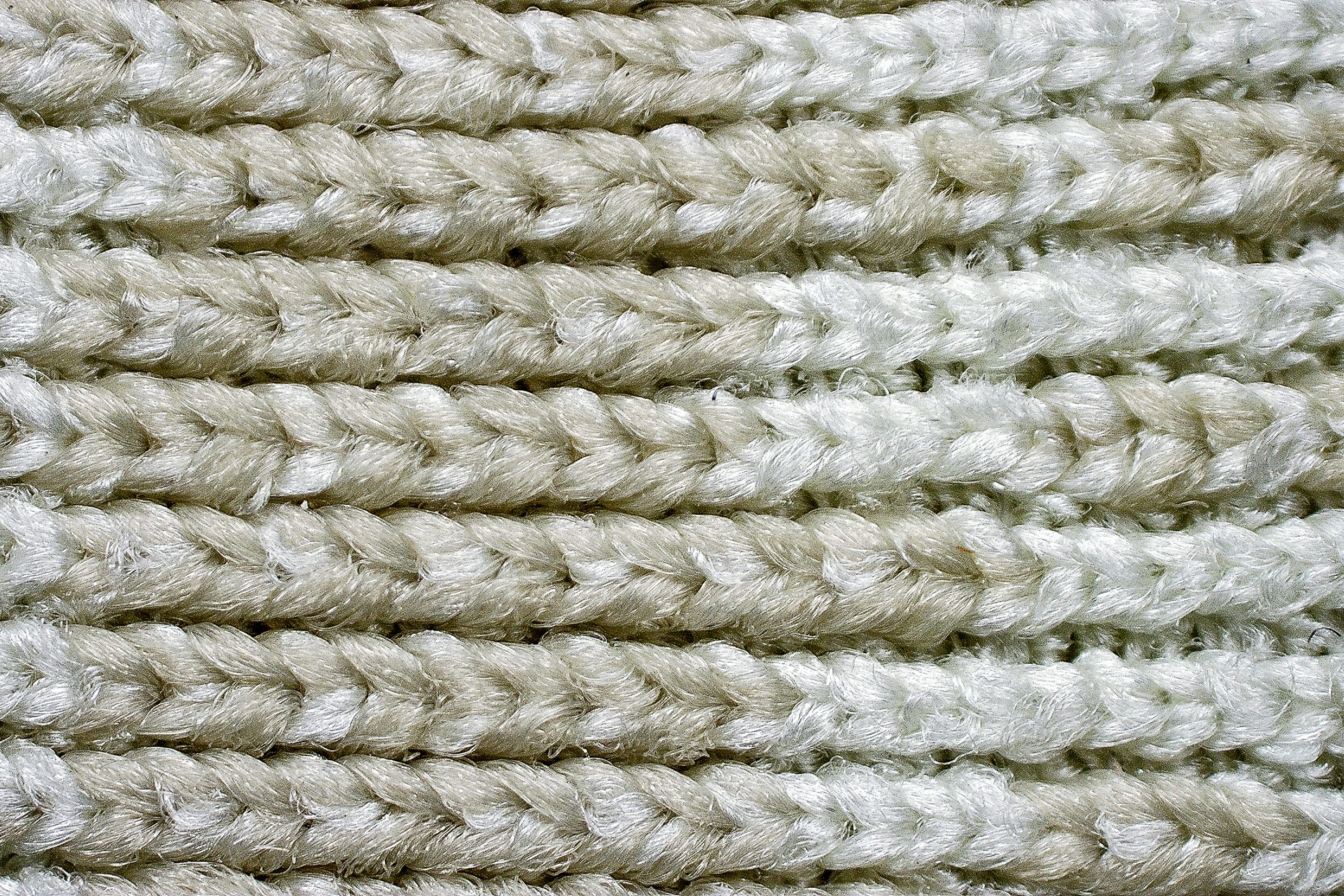
Eso sí, el upper es comodísimo para lo poco que pesan estas zapatillas. Las Arahi 8 son una opción acertada que mantendrá tus pies calentitos incluso en los climas más fríos.
| Arahi 8 | 2 |
| Media | 3.7 |
Estabilidad
Prueba de estabilidad lateral
La actualización más importante de las Arahi 8 es el cambio del J-Frame de HOKA al nuevo sistema de estabilidad H-Frame, que utiliza una espuma más firme para contener las fuerzas laterales. Este cambio ofrece una mayor sujeción y, al mismo tiempo, deja que la suela pueda ser más alta y que la espuma pueda ser más blandita.
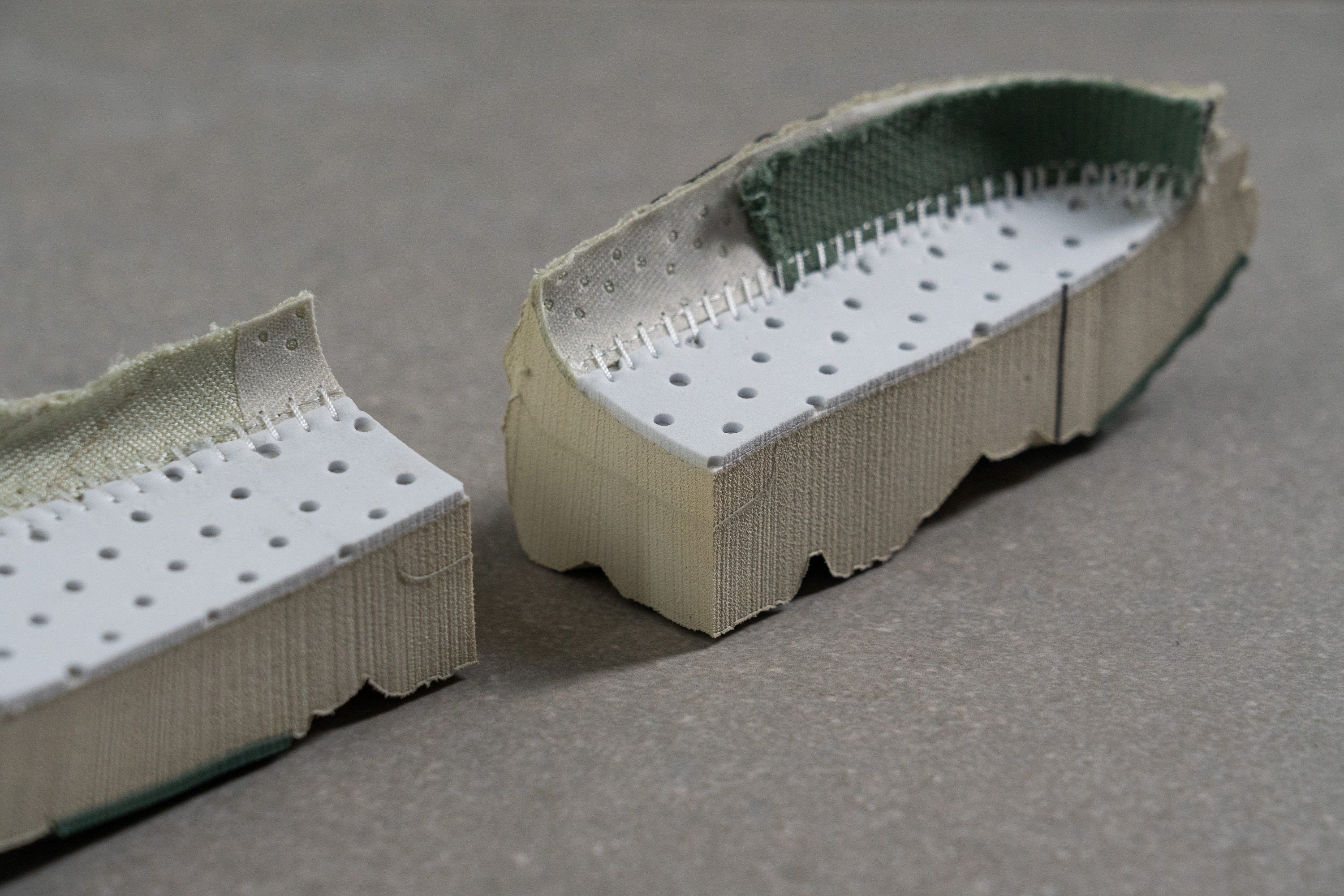
La estabilidad sigue siendo uno de sus puntos fuertes, como es típico de la línea Arahi. Aunque no son tan increíblemente estables como las HOKA Gaviota 5 por su diseño, que más compacto, siguen ofreciendo una buena sujeción que satisfará las necesidades de la mayoría de los sobrepronadores.
Rigidez torsional
Las Arahi 8 no soy muy flexibles... en ningún aspecto. Cuando las intentamos retorcer con las manos, se resistieron un montón, así que se llevaron un 5/5 en rigidez torsional.
| Arahi 8 | 5 |
| Media | 3.5 |
Rigidez del contrafuerte del talón
El contrafuerte del talón de las Arahi 8 es más cómodo y menos intrusivo que el de las versiones anteriores. Cuando lo analizamos en el laboratorio, se llevó un 3/5 en rigidez, que es básicamente la media.
| Arahi 8 | 3 |
| Media | 2.9 |
Anchura de la mediasuela - antepié
Las Arahi 8 nos han dejado claro que son unas zapatillas de estabilidad moderada, y no un modelo de estabilidad total y absoluta. Esto lo sabemos por su tamaño, ya que la parte delantera mide 117,6 mm, que es un resultado muy cercano al de las zapatillas de entrenamiento diario neutras.
Esta es la fórmula común para las zapatillas de estabilidad suave: una mediasuela con un tamaño intermedio entre un par de entrenamiento y una opción increíblemente estable, y características de estabilidad sutiles. Pues resulta que esto es suficiente para la mayoría de los corredores con problemas de pronación, y así se consigue que las zapatillas sean menos voluminosas y más ágiles.

| Arahi 8 | 117.6 mm |
| Media | 114.4 mm |
Anchura de la mediasuela - talón
Y con la zona del talón pasa lo mismo: es un poquito más ancha que la media de nuestro laboratorio con sus 96,3 mm. No necesita ser más ancha, ya que modelos como los de la serie Gaviota tienen eso cubierto, por lo que las Arahi 8 se pueden centrar en darte un poquito de cada.
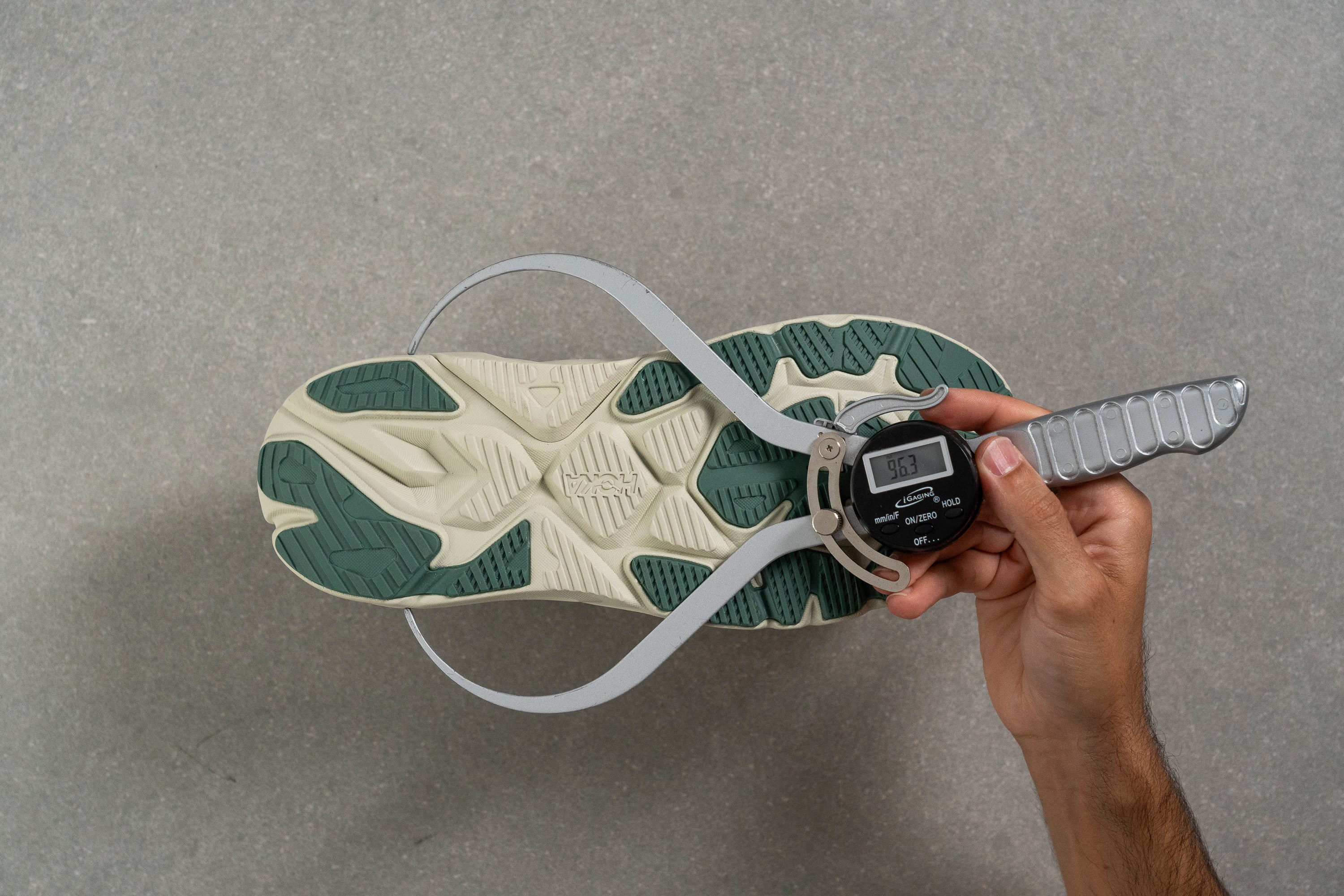
| Arahi 8 | 96.3 mm |
| Media | 90.7 mm |
Durabilidad
Durabilidad de la parte delantera
Está claro que las Arahi 8 son muy poco transpirables, pero esto hace que su durabilidad mejore. En nuestra prueba con el Dremel, se llevaron un perfecto 5/5 gracias a la malla jacquard de alta densidad.
| Arahi 8 | 5 |
| Media | 2.6 |
Durabilidad del acolchado del talón
Pero espera, porque todavía hay más. El acolchado del talón de las Arahi 8 también aguantó el chaparrón, llevándose otro 5/5. La verdad es que es uno de los más duraderos que hemos probado en nuestro laboratorio.
| Arahi 8 | 5 |
| Media | 3.4 |
Durabilidad de la suela
La suela lo tenía difícil para estar a la altura con lo altos que fueron los resultados de las Arahi 8, pero consiguió dejarnos boquiabiertos como si nada.
Que sí, que sí, que los daños del Dremel fueron de solo 0,5 mm, ¡que es la mitad de lo que solemos ver! Para desgastar estas zapatillas, ya les puedes dar mucha, pero que muchísima caña.
| Arahi 8 | 0.5 mm |
| Media | 1.1 mm |
Grosor de la suela
HOKA utilizó 3,3 mm de caucho para la suela exterior de este modelo, que tiene un diseño que claramente prioriza la durabilidad, apostando por lo seguro. Pero hay algo que nos chirría..., ¿por qué no utilizó 2 o 2,5 mm? Al fin y al cabo, el caucho es lo suficientemente duradero, así que con menos cantidad, las zapatillas habrían sido más ligeras y cómodas para correr.
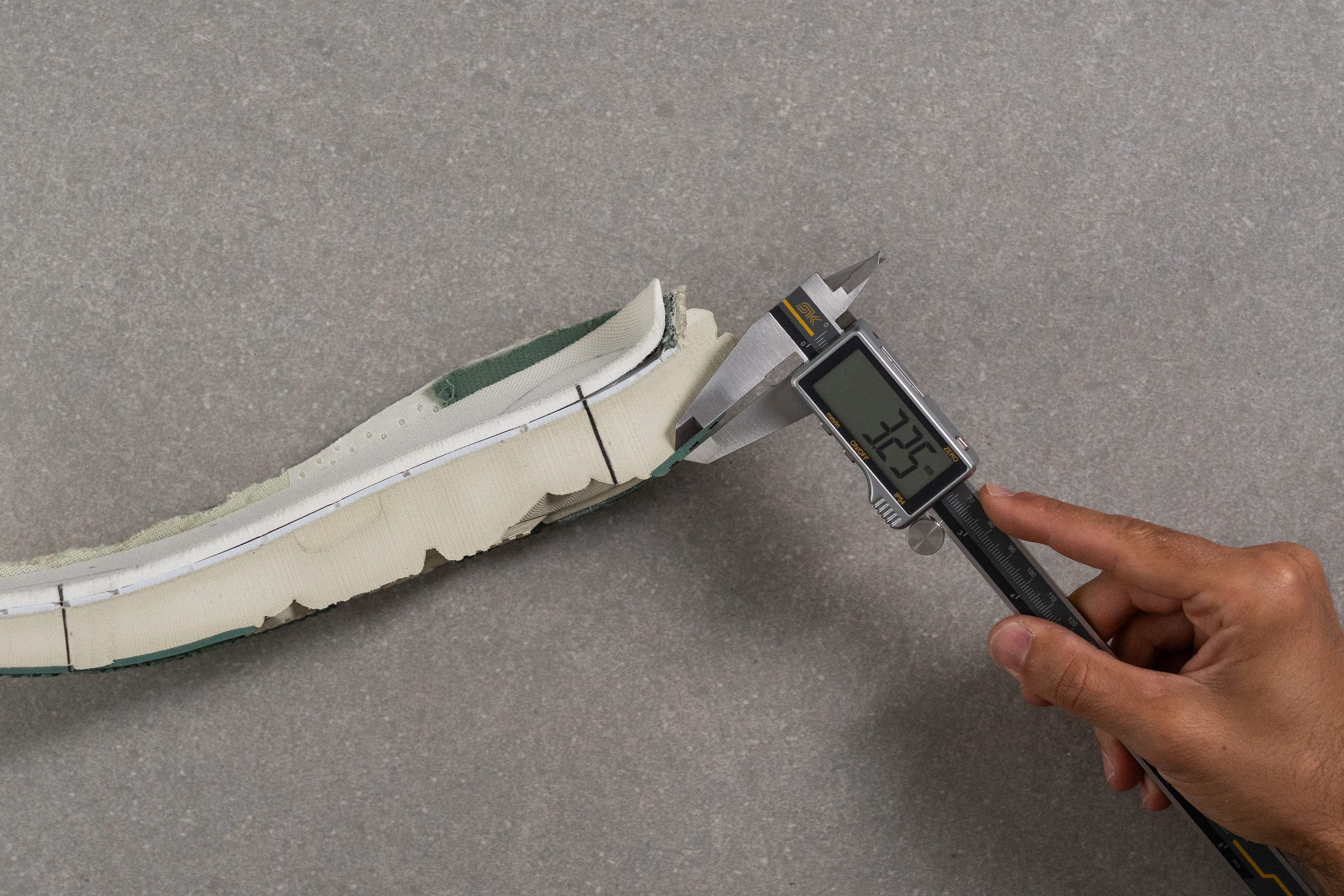
| Arahi 8 | 3.3 mm |
| Media | 3.2 mm |
Varios
Grosor de la plantilla
La plantilla está fabricada con espuma EVA y tiene un grosor estándar de 4,5 mm.
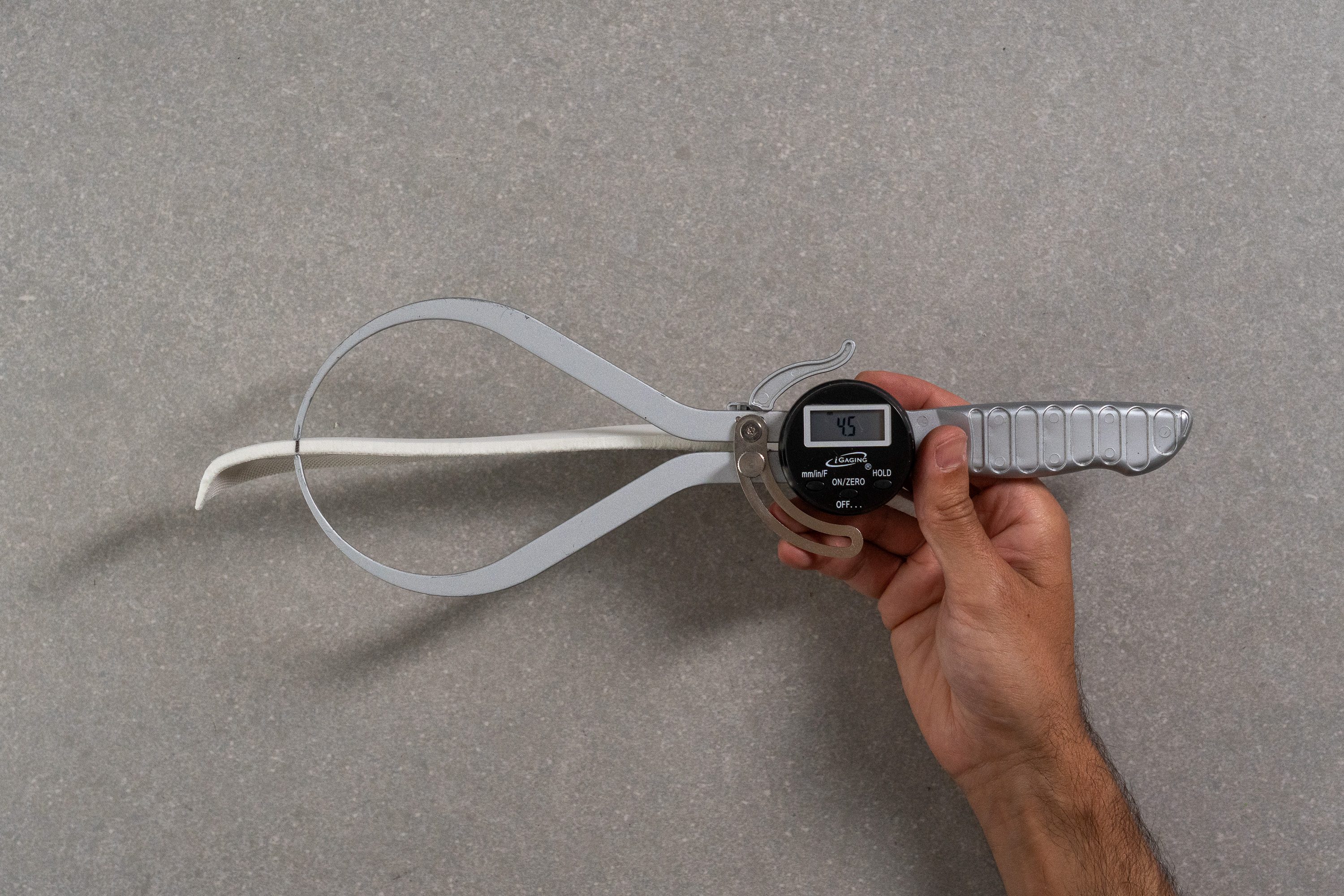
| Arahi 8 | 4.5 mm |
| Media | 4.5 mm |
Plantilla extraíble
Como ocurre con algunas zapatillas de estabilidad, las Arahi 8 tienen un pequeño refuerzo en el talón. Pero si quieres cambiarles la plantilla, no tendrás problema.
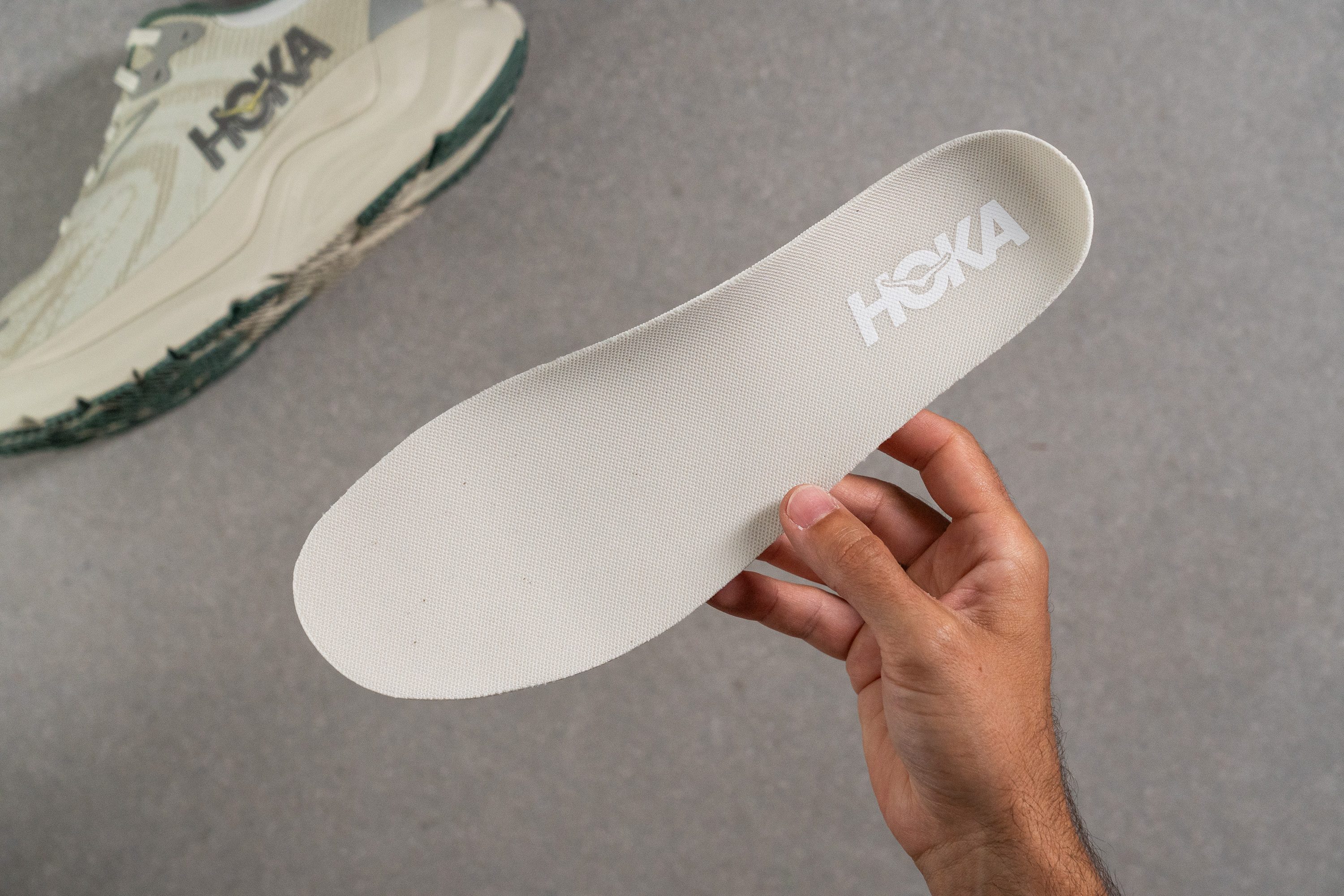
| Arahi 8 | Sí |
Rigidez de la mediasuela en frío (%)
Las Arahi 8 siguen utilizando espuma EVA, lo que significa que no llevan muy bien el frío. De hecho, cuando las metimos en nuestro congelador 20 minutos, se volvieron un 31 % más rígidas.
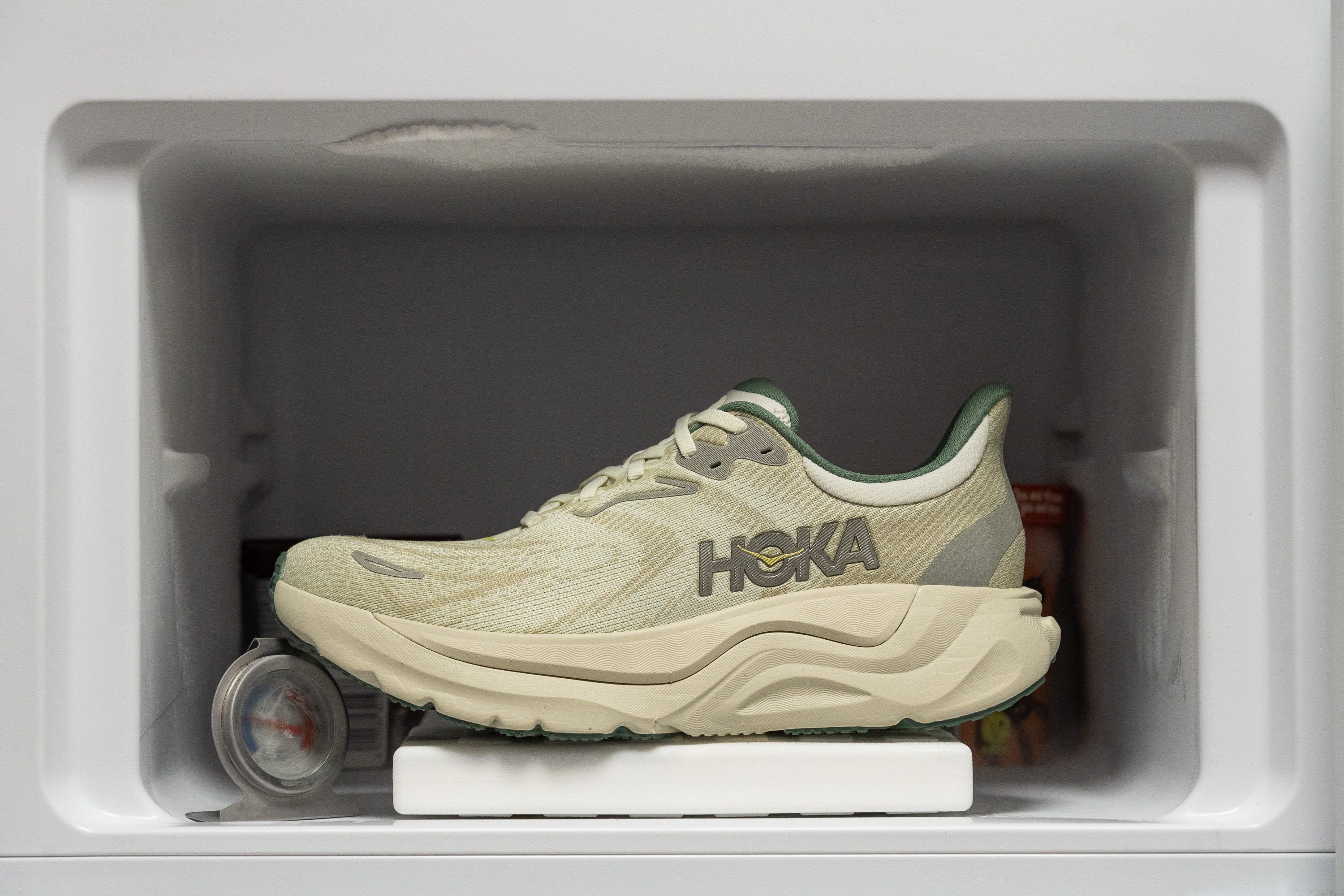
| Arahi 8 | 31% |
| Media | 24% |
Elementos reflectantes
Estamos muy contentos con todos los elementos reflectantes de las Arahi 8. Aunque hay otras marcas que deciden recortar gastos en este aspecto, HOKA tomó la decisión correcta al ponerle un montón a este modelo.
| Arahi 8 | Sí |
Acolchado de la lengüeta
Las Arahi 8 tienen un sistema de cordones estándar con cordones planos que pasan por ojales reforzados para mejorar la durabilidad, que es un elemento clave del diseño de este modelo. Un conjunto de ojales extra en la parte superior deja que te ates los cordones como quieras, y el lacito de la lengüeta ayuda a que esta no se mueva.
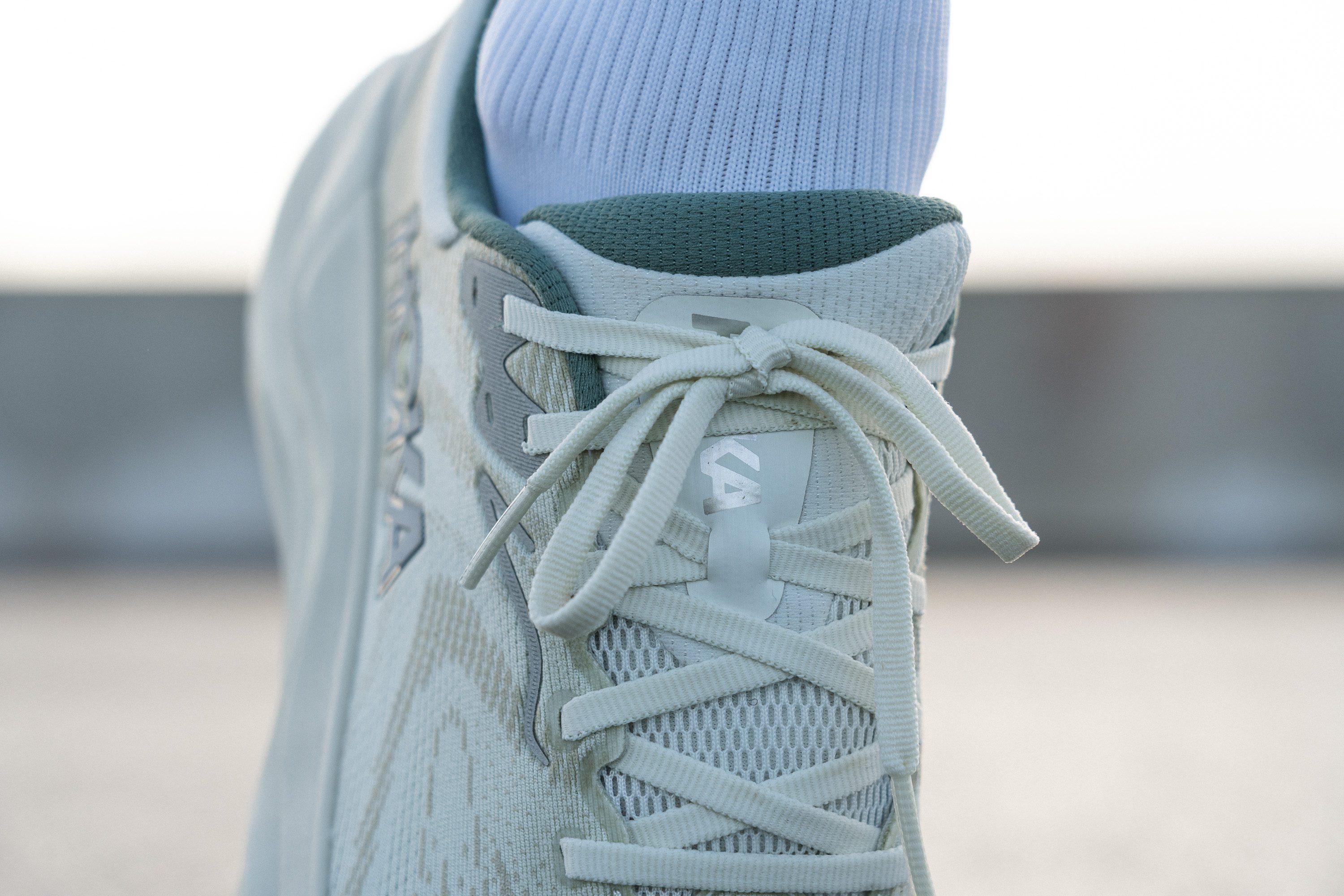
Nos ha quedado clarísimo que HOKA se centró en que estas zapatillas fuesen cómodas tanto para correr como para el uso diario, y gran parte de esto se lo debemos a su lengüeta acolchada. Con un grosor de 11,7 mm, es comodísima y la verdad es que nos sorprendió que este modelo fuese tan ligero incluso con todo este acolchado.
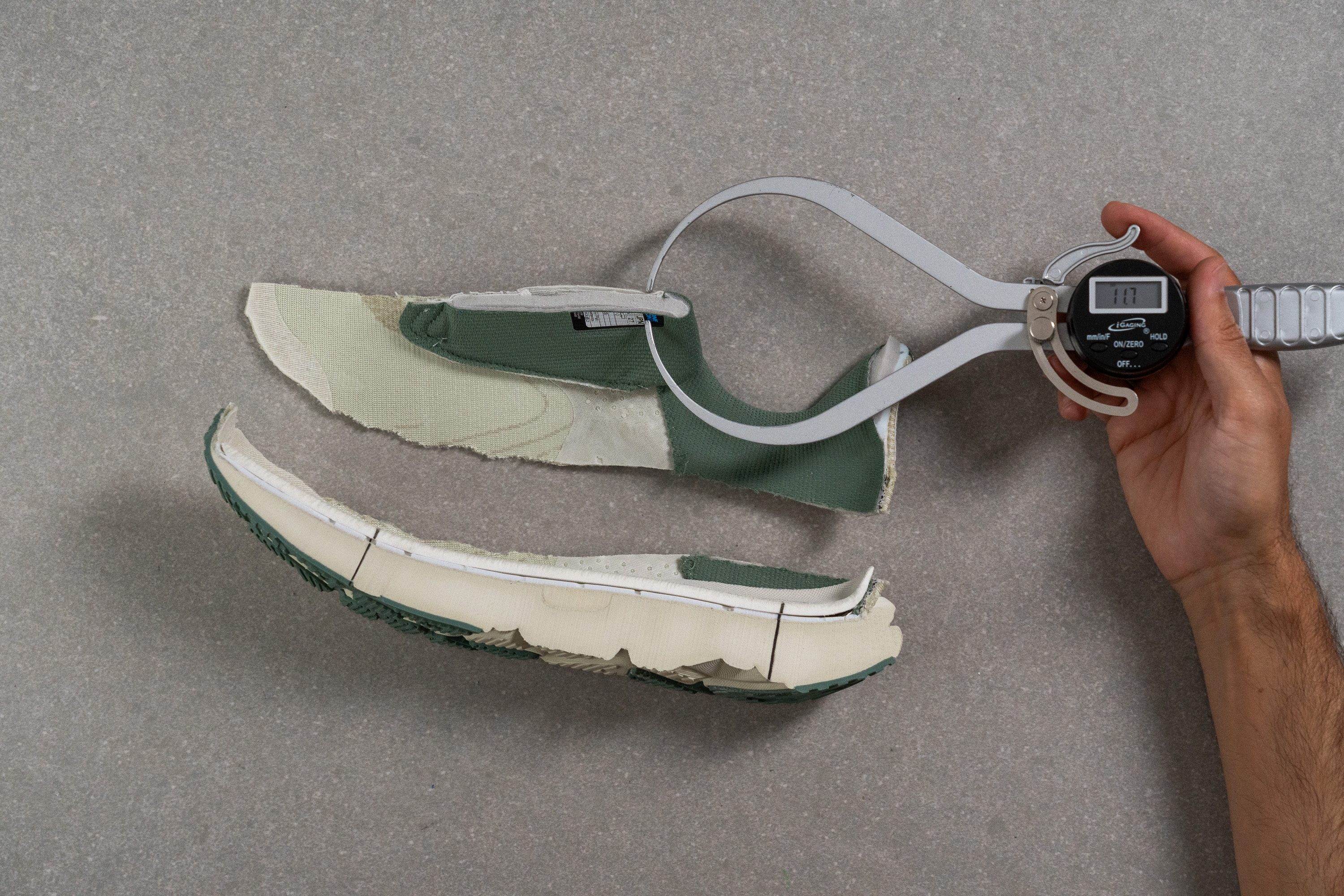
| Arahi 8 | 11.7 mm |
| Media | 5.8 mm |
Lengüeta: tipo de refuerzo
La lengüeta no tiene refuerzo, así que a lo mejor se te mueve de un lado a otro cuando sales a correr. No podemos decir que sea un inconveniente terrible, pero sí que esperamos que la versión 9 cambie esto.
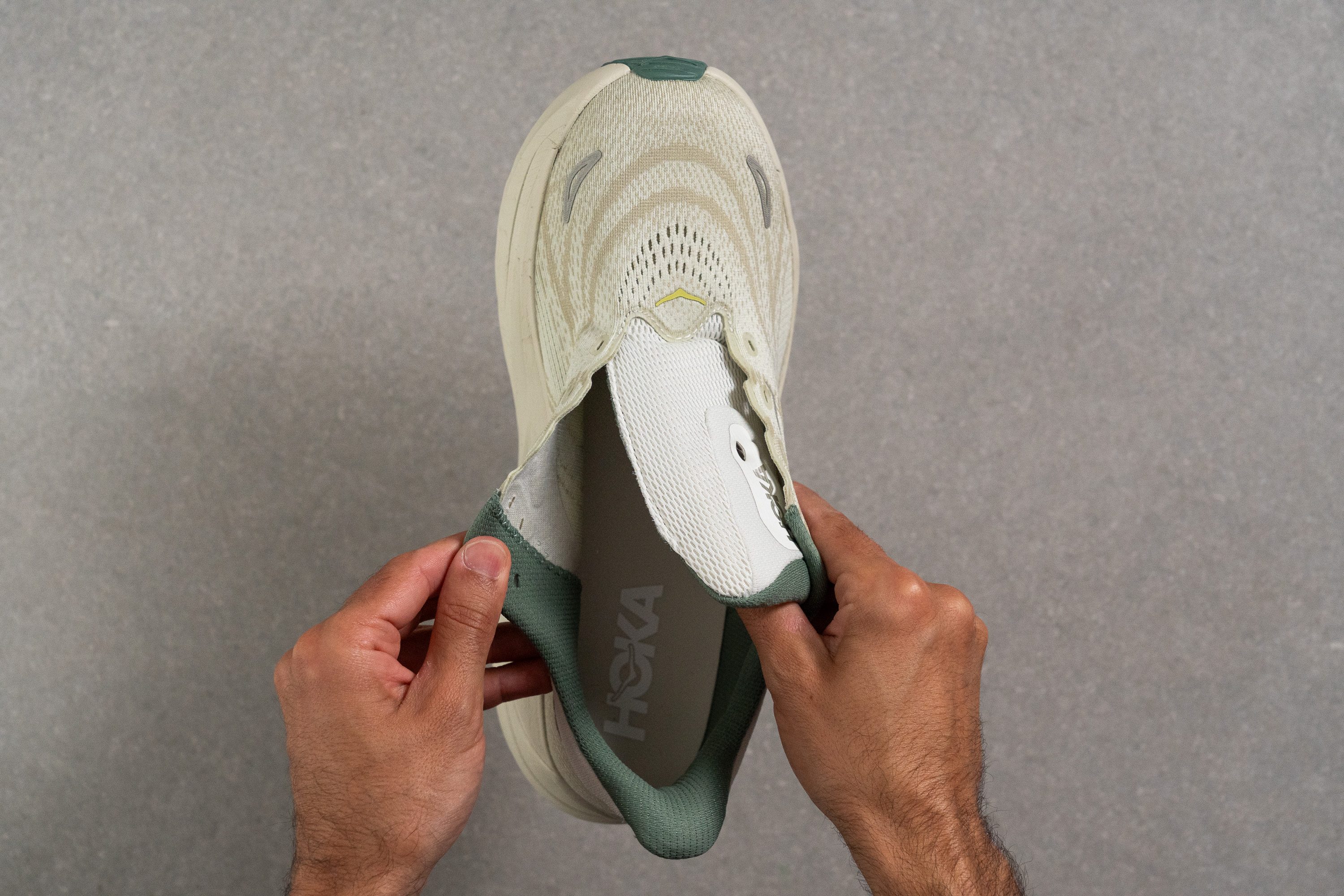
| Arahi 8 | Ninguno |
Precio
Las Arahi 8 son un poco más caras que sus predecesoras pero, en nuestra opinión, está justificado. Este modelo tiene mucha más amortiguación, una durabilidad de primera y se mantiene dentro del rango de precios que nos esperábamos (teniendo en cuenta la inflación).
| Arahi 8 | $150 |
Tirador del talón
El tirador de estas HOKA está un poquito acolchado y levemente curvado hacia fuera para reducir la presión sobre el tendón de Aquiles y que calzarse sea más fácil.
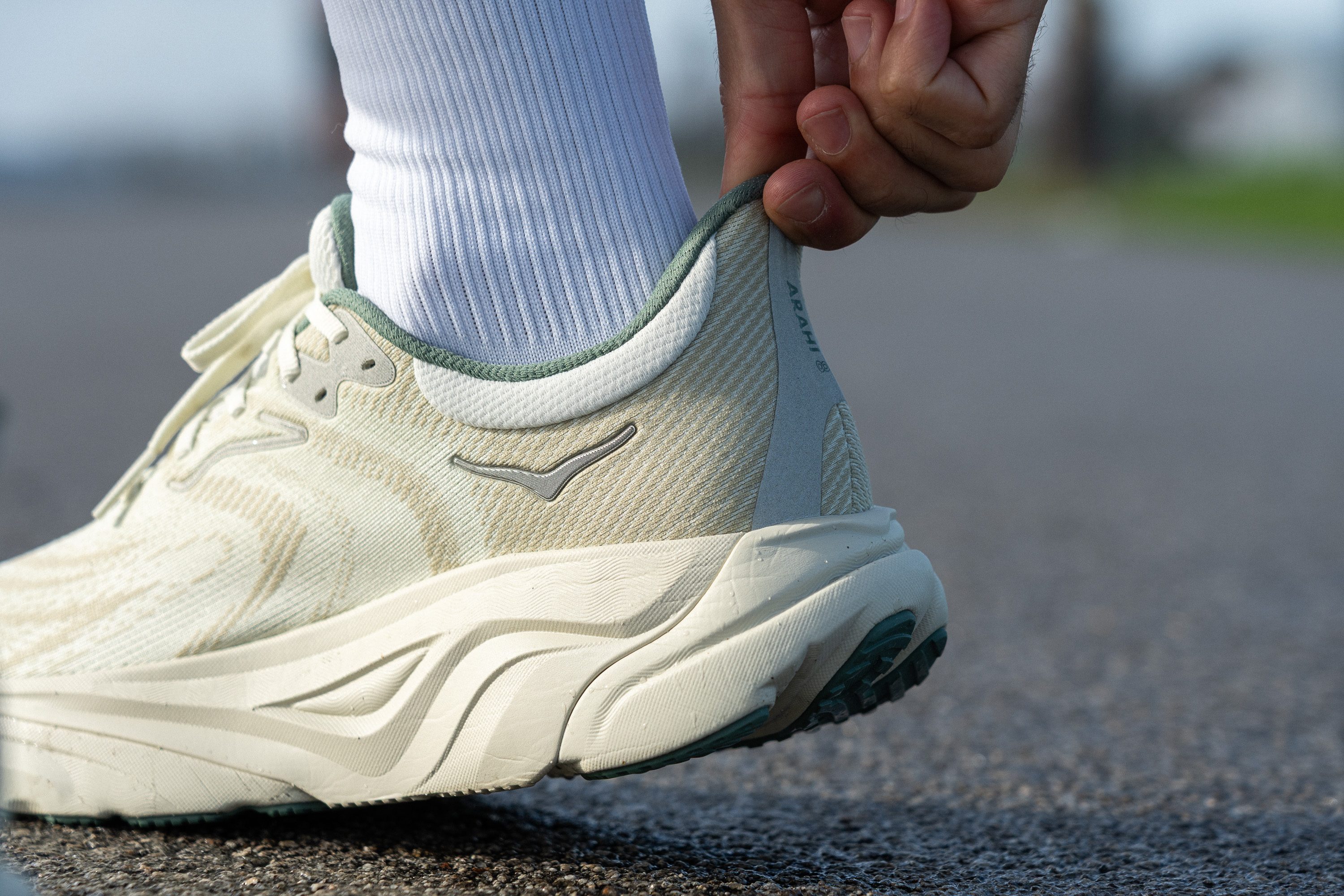
| Arahi 8 | Talón extendido |

